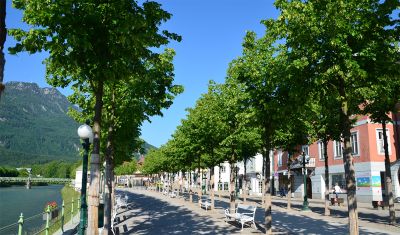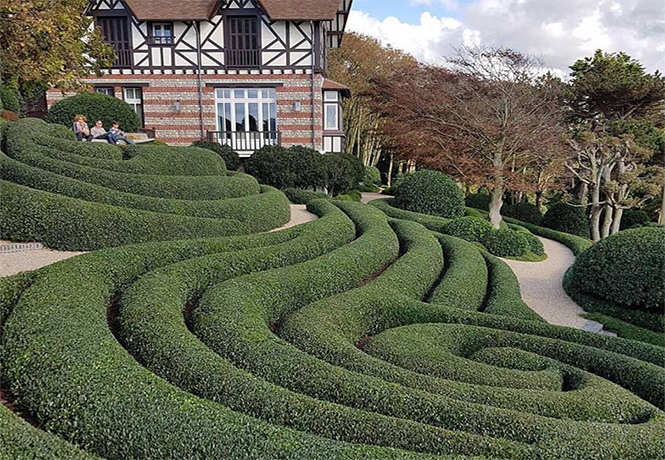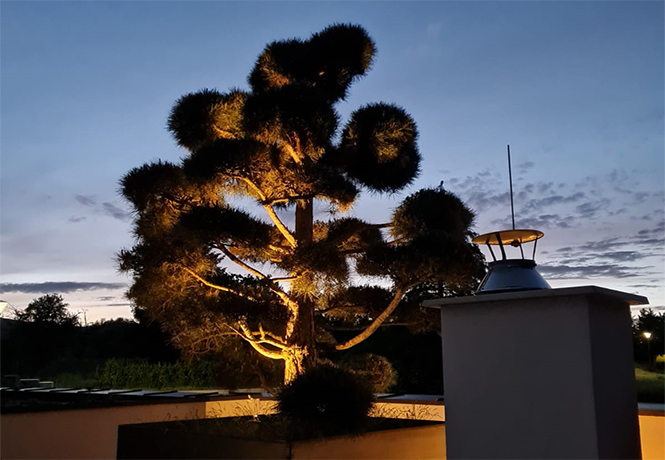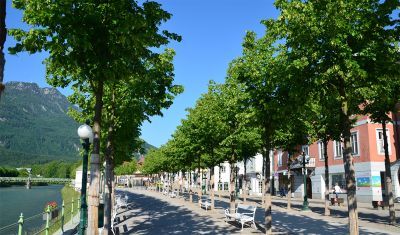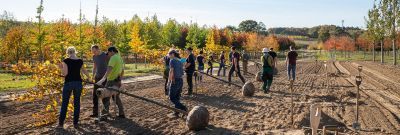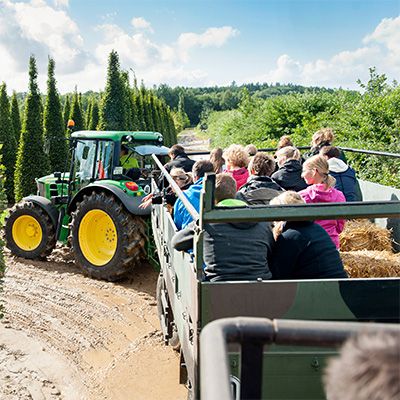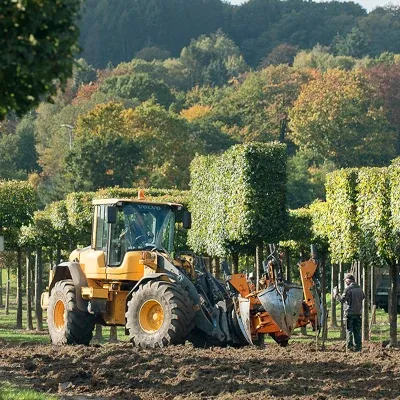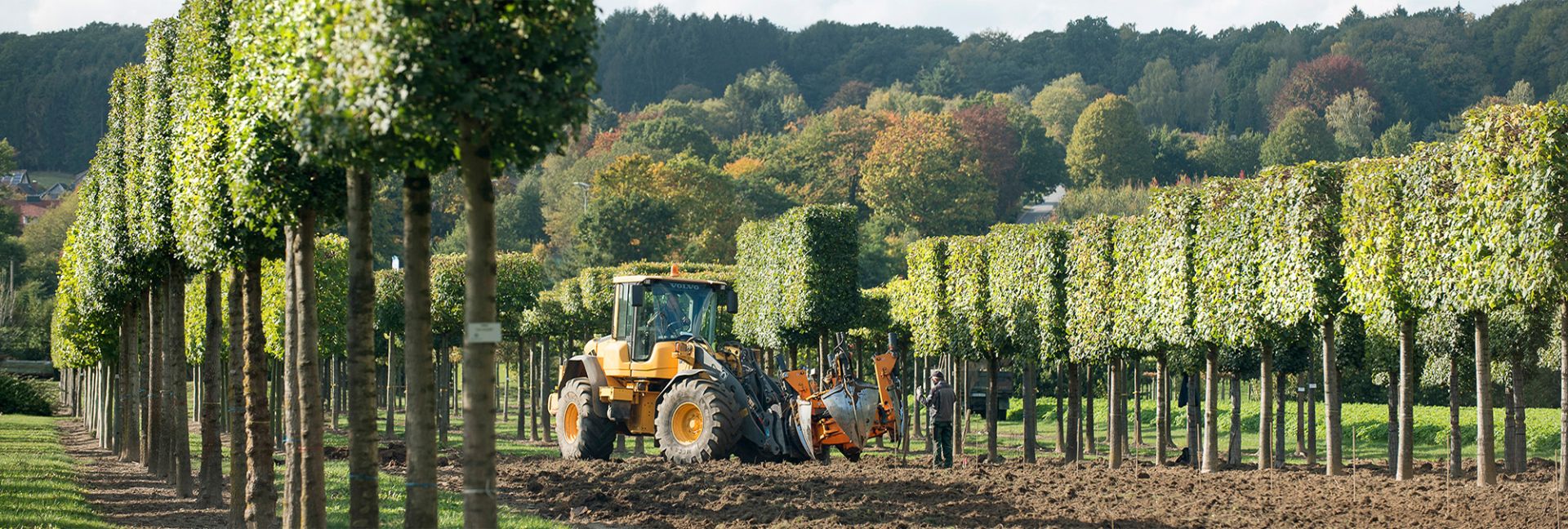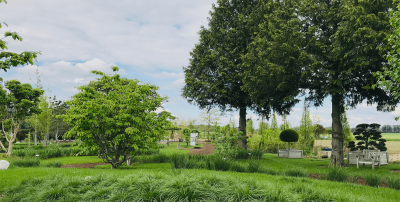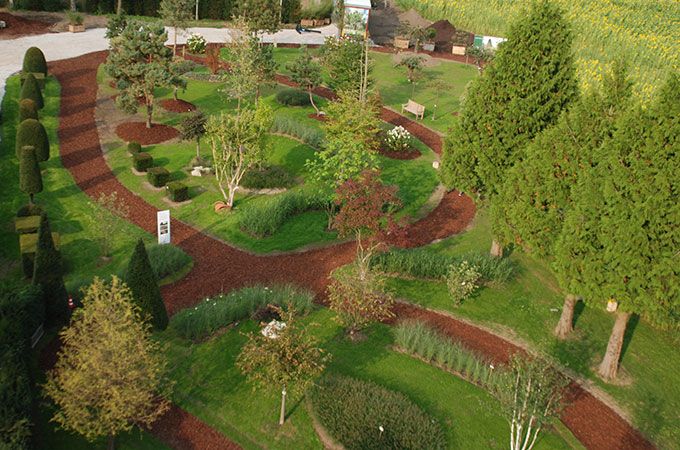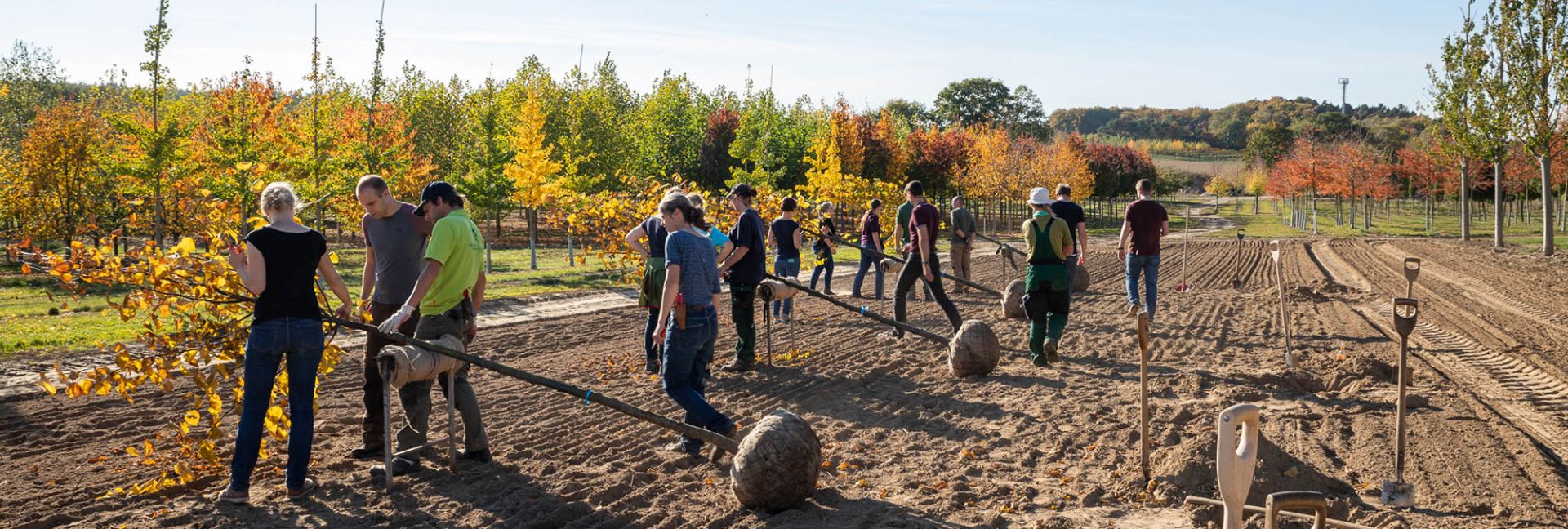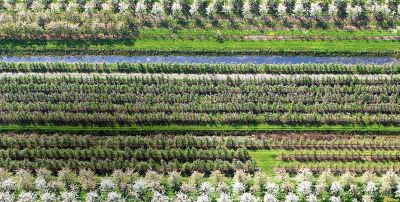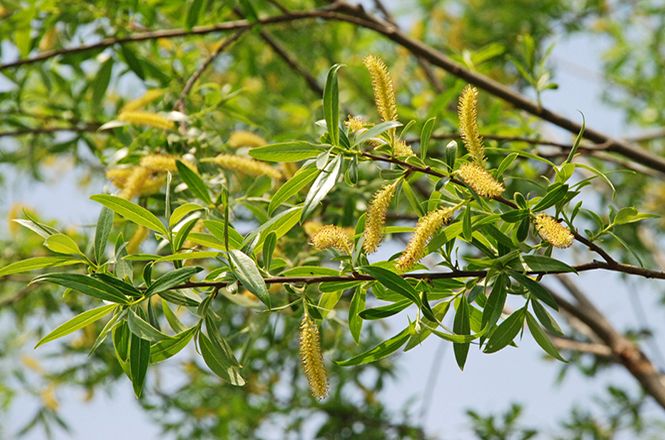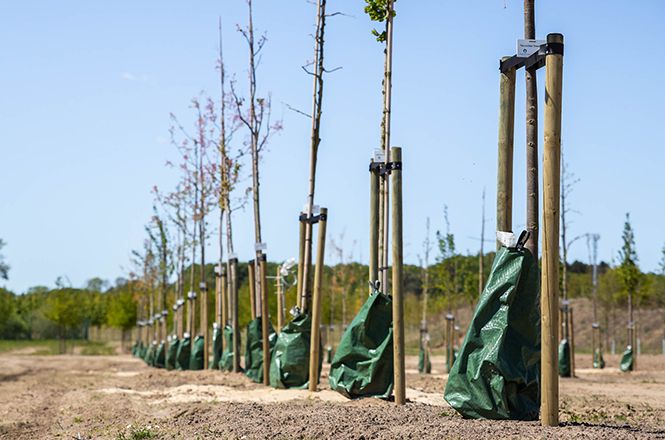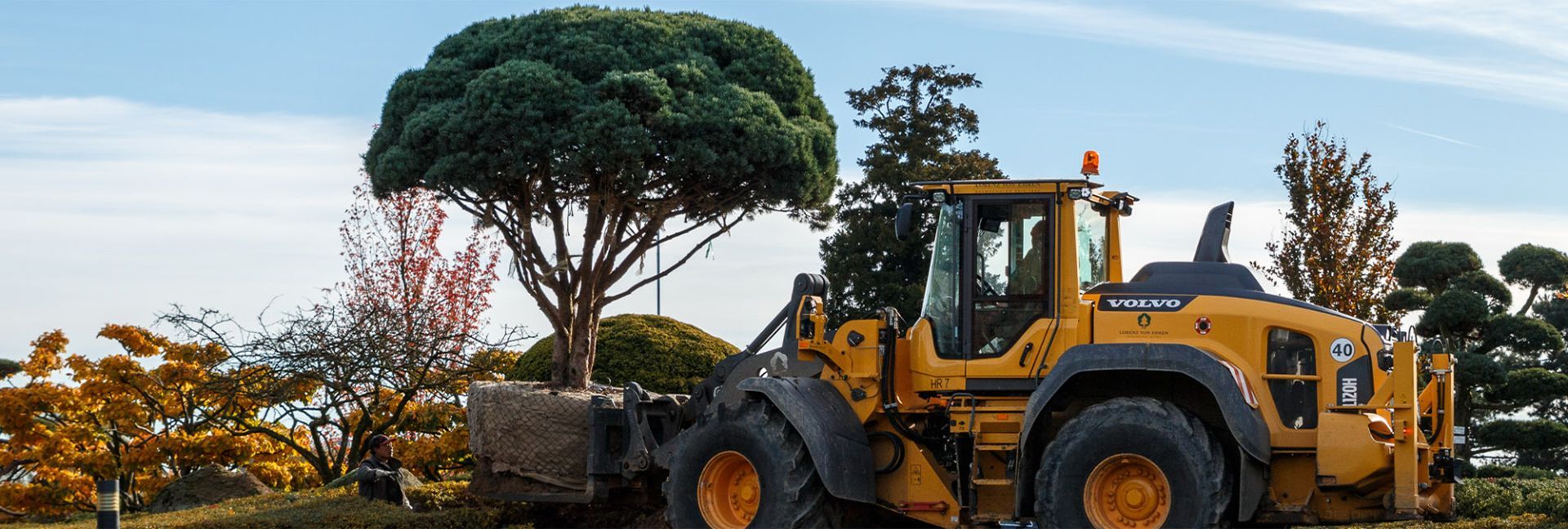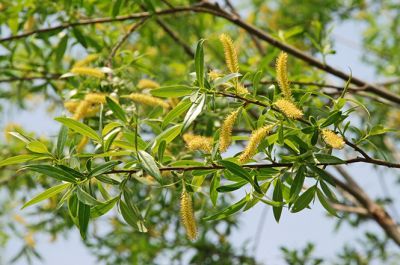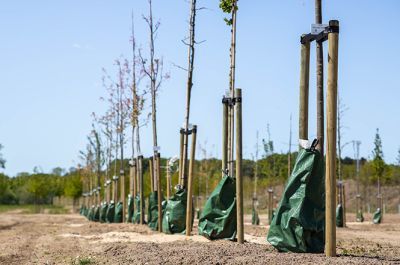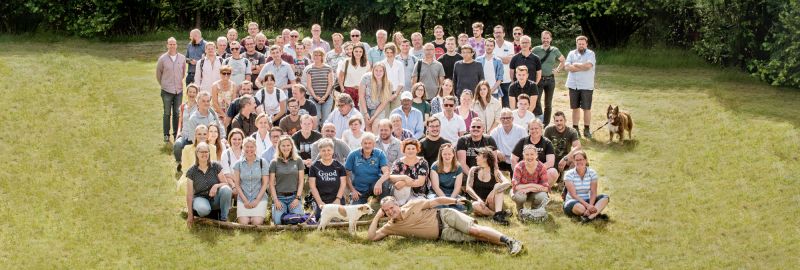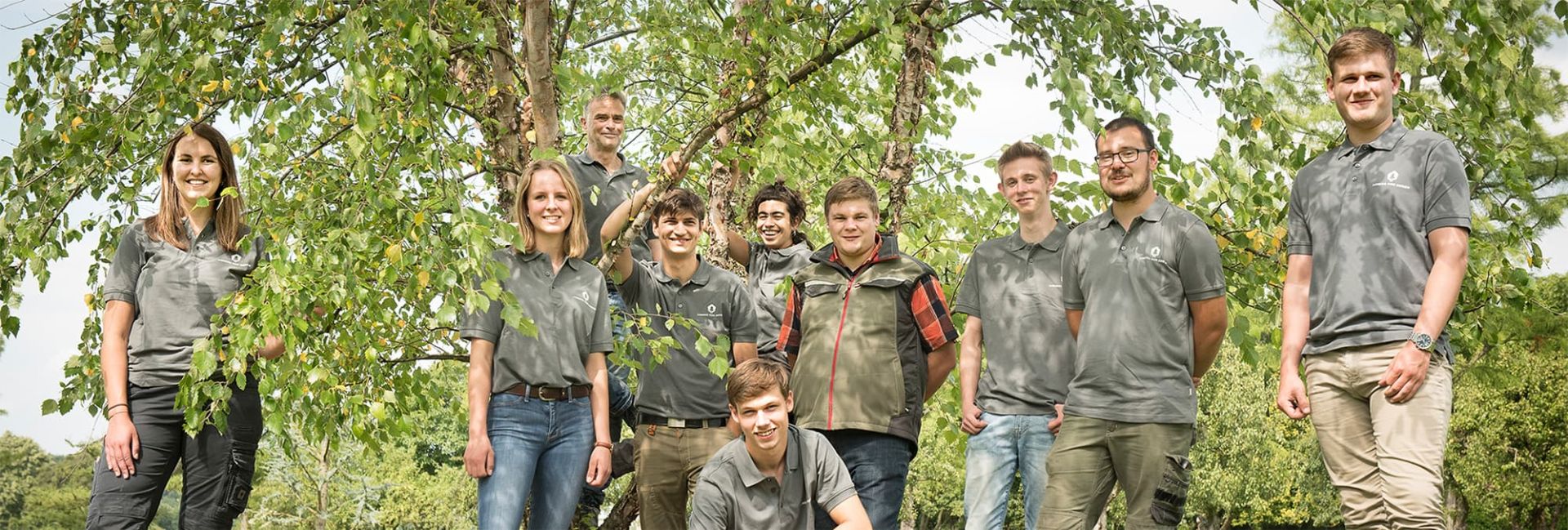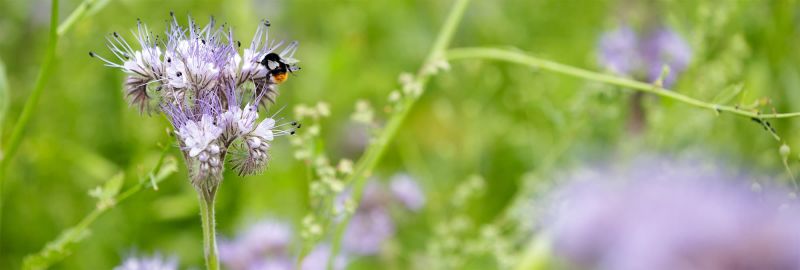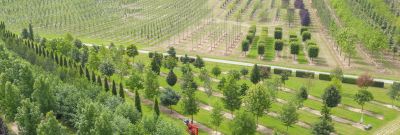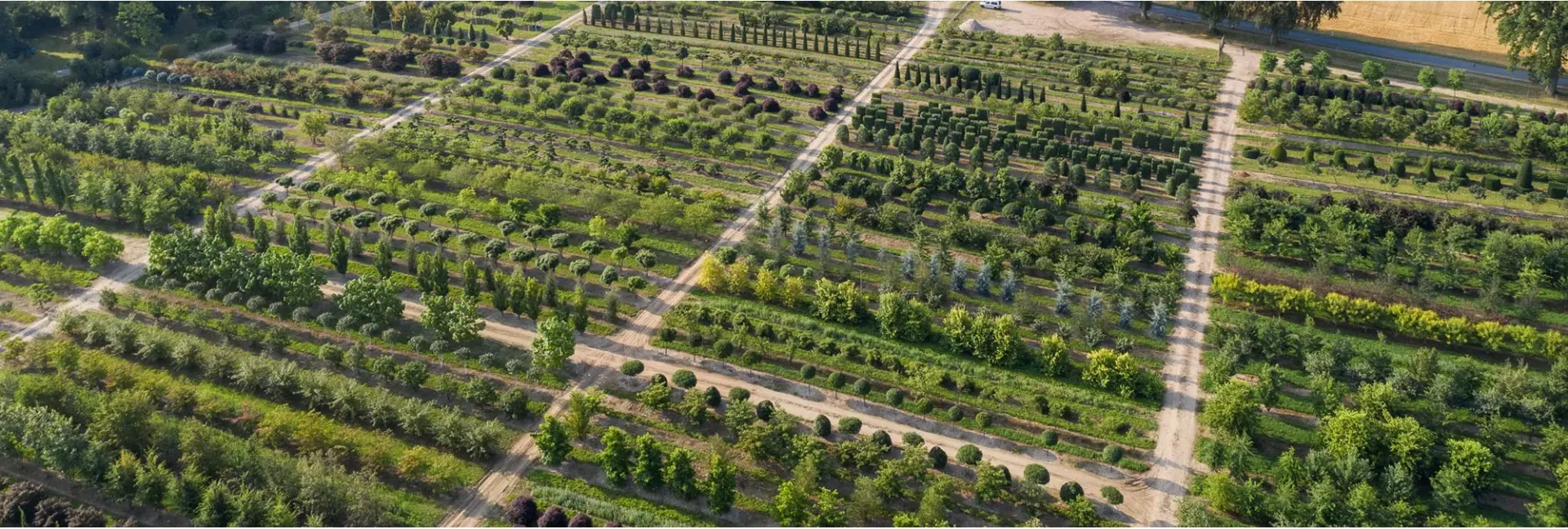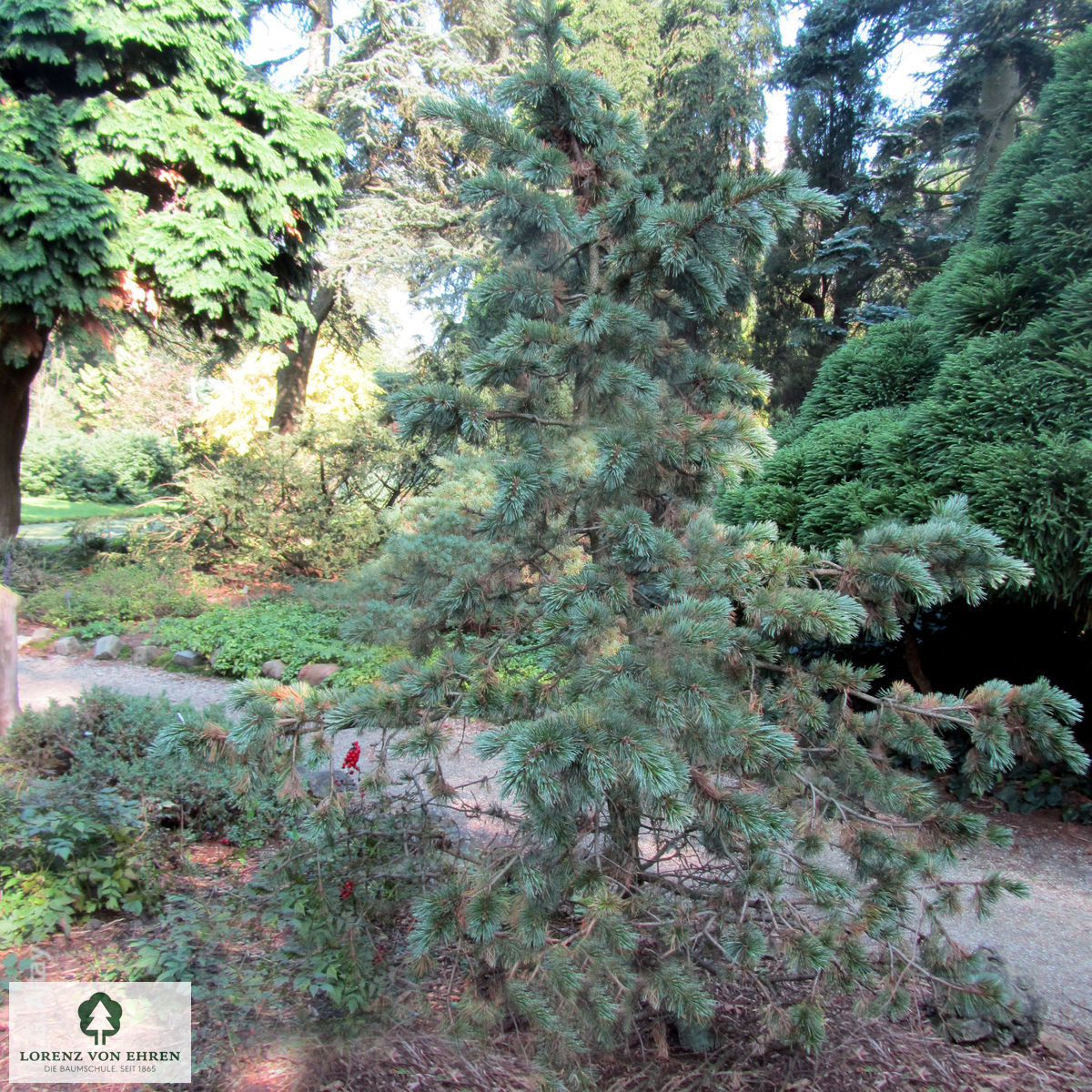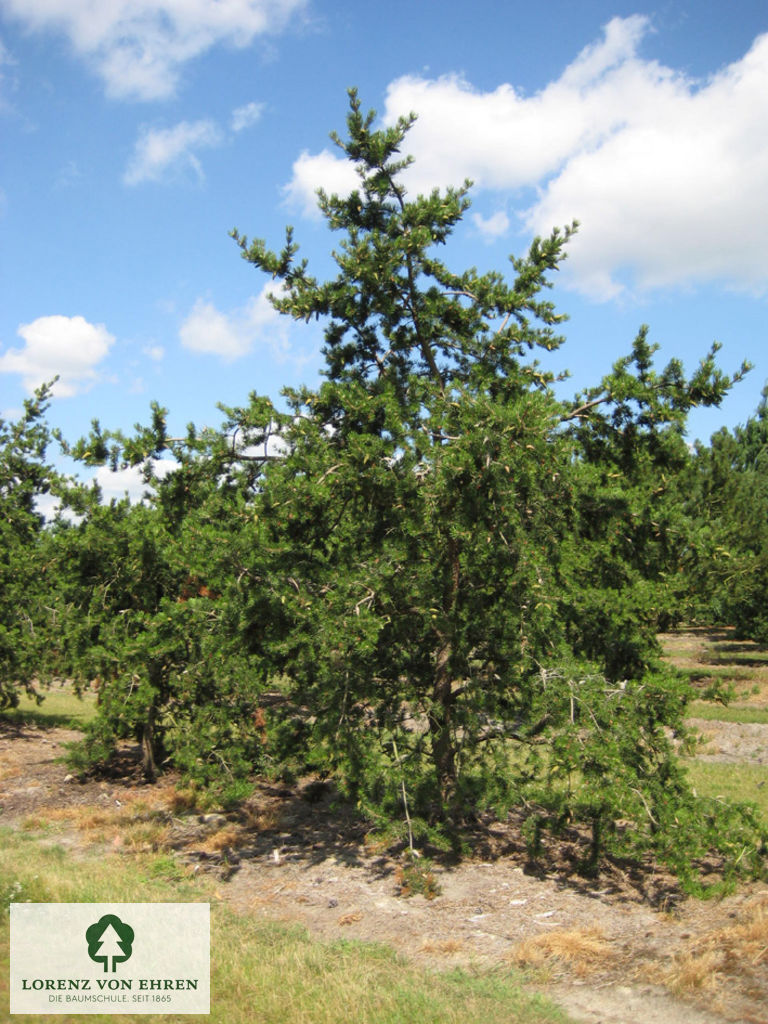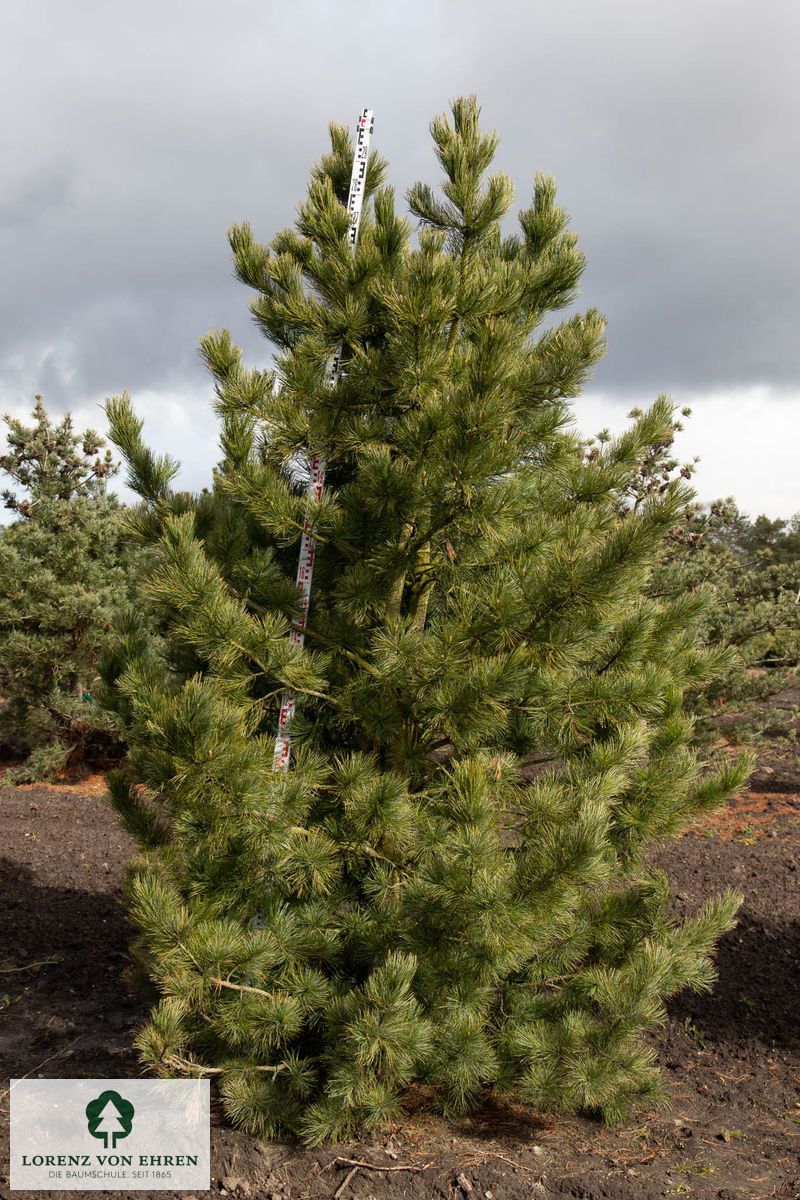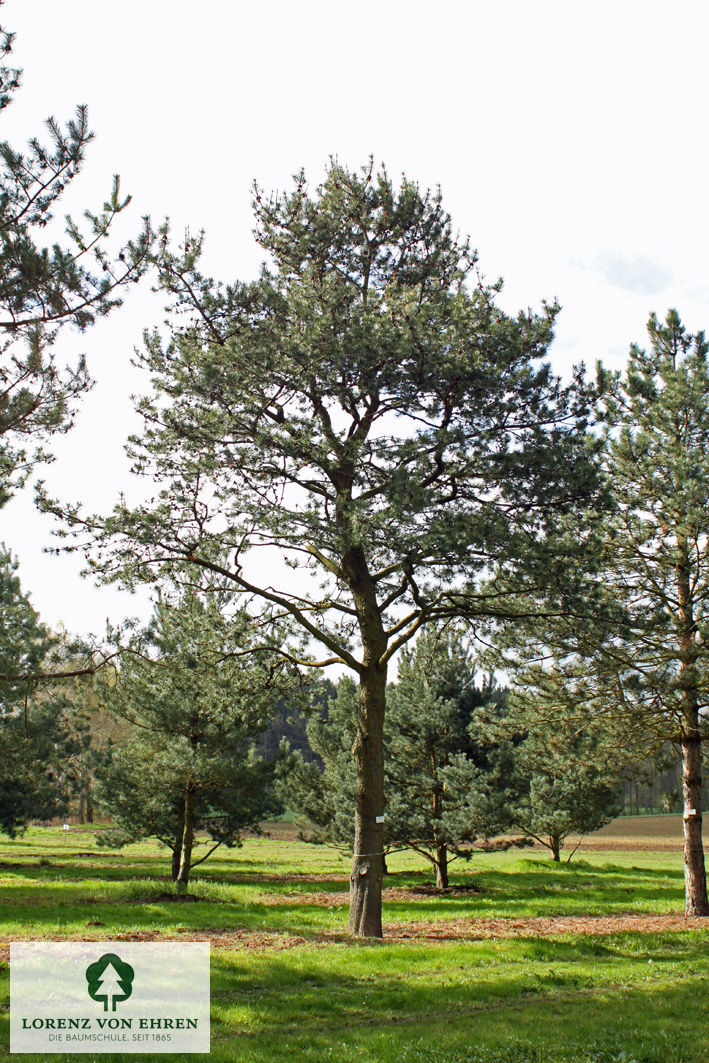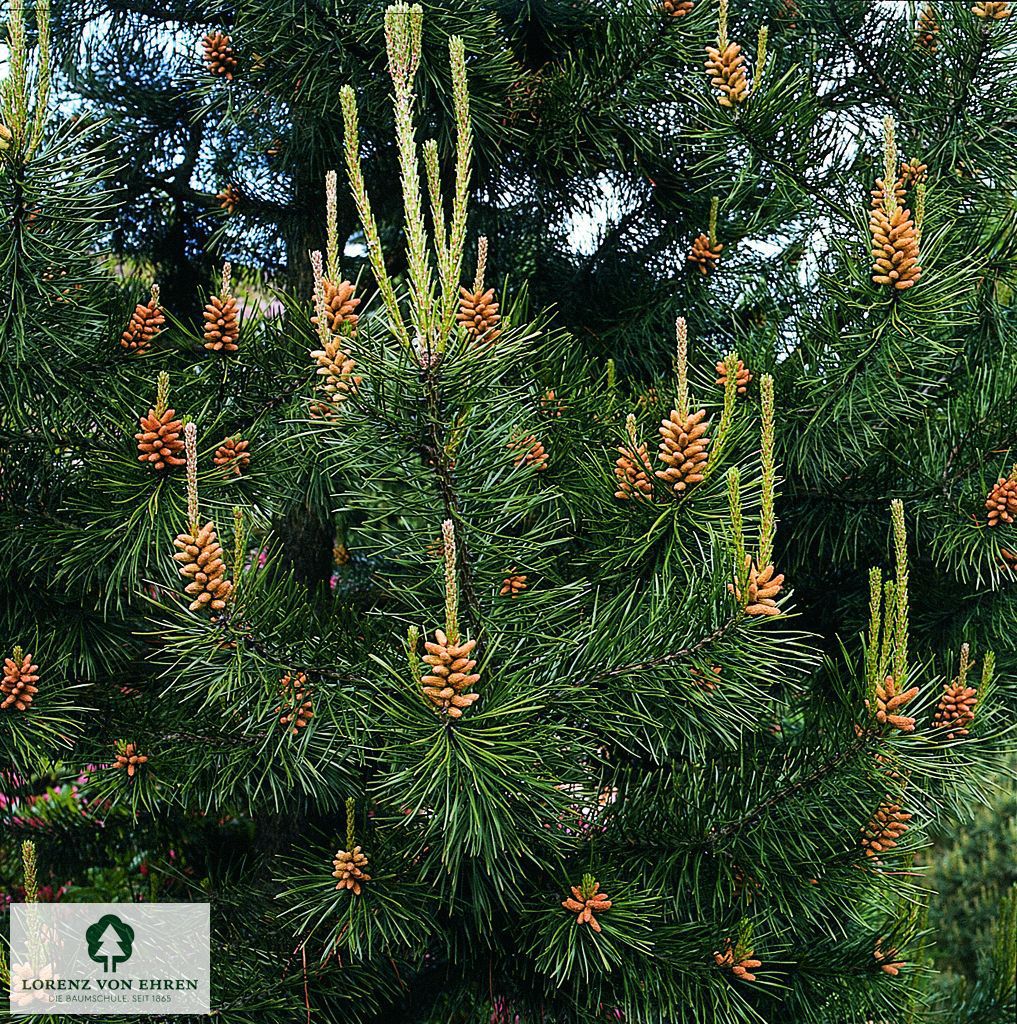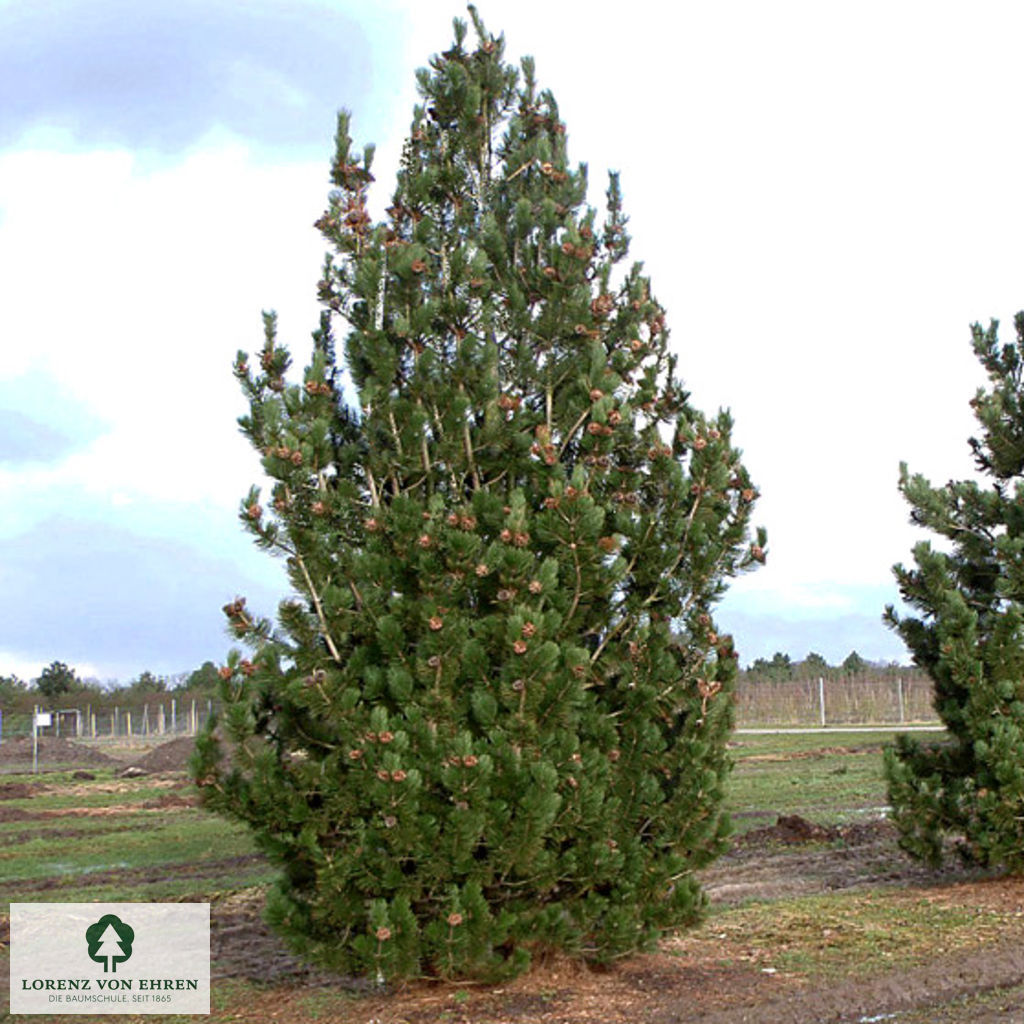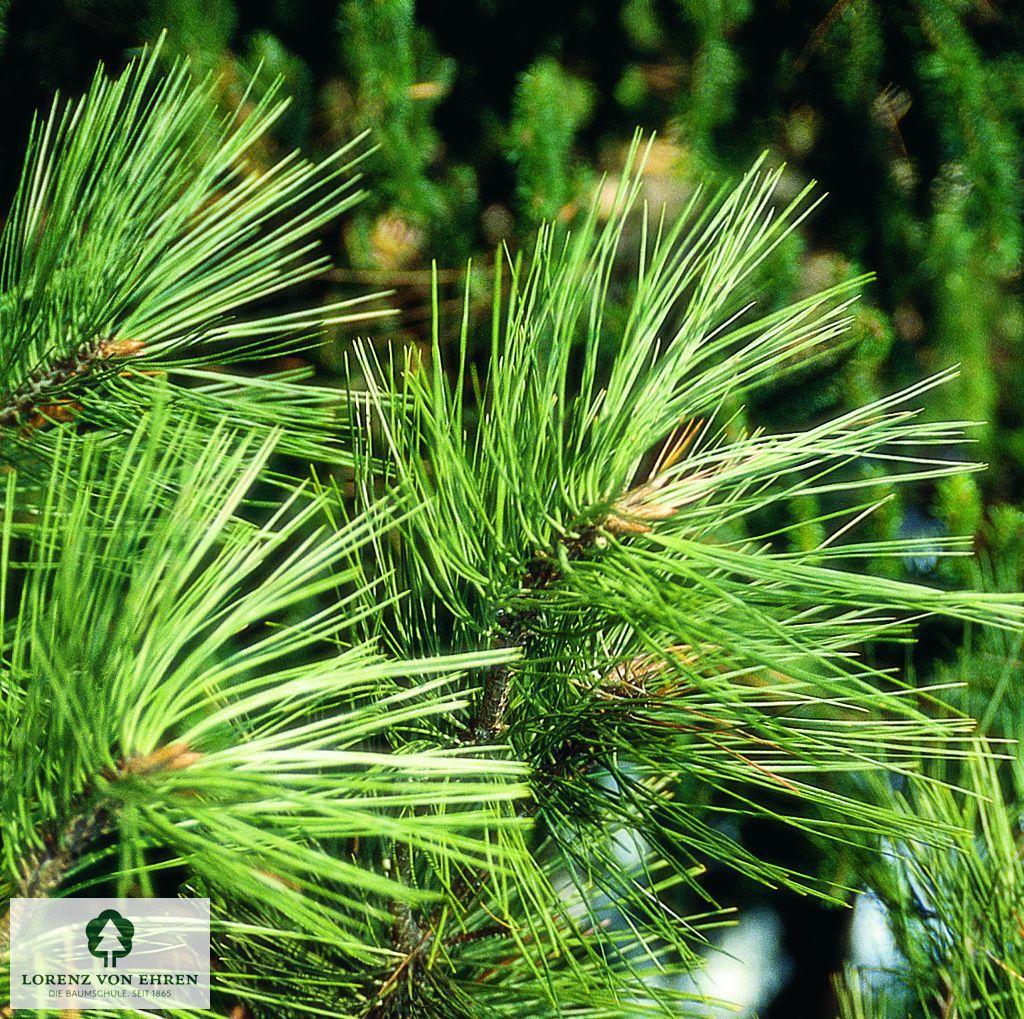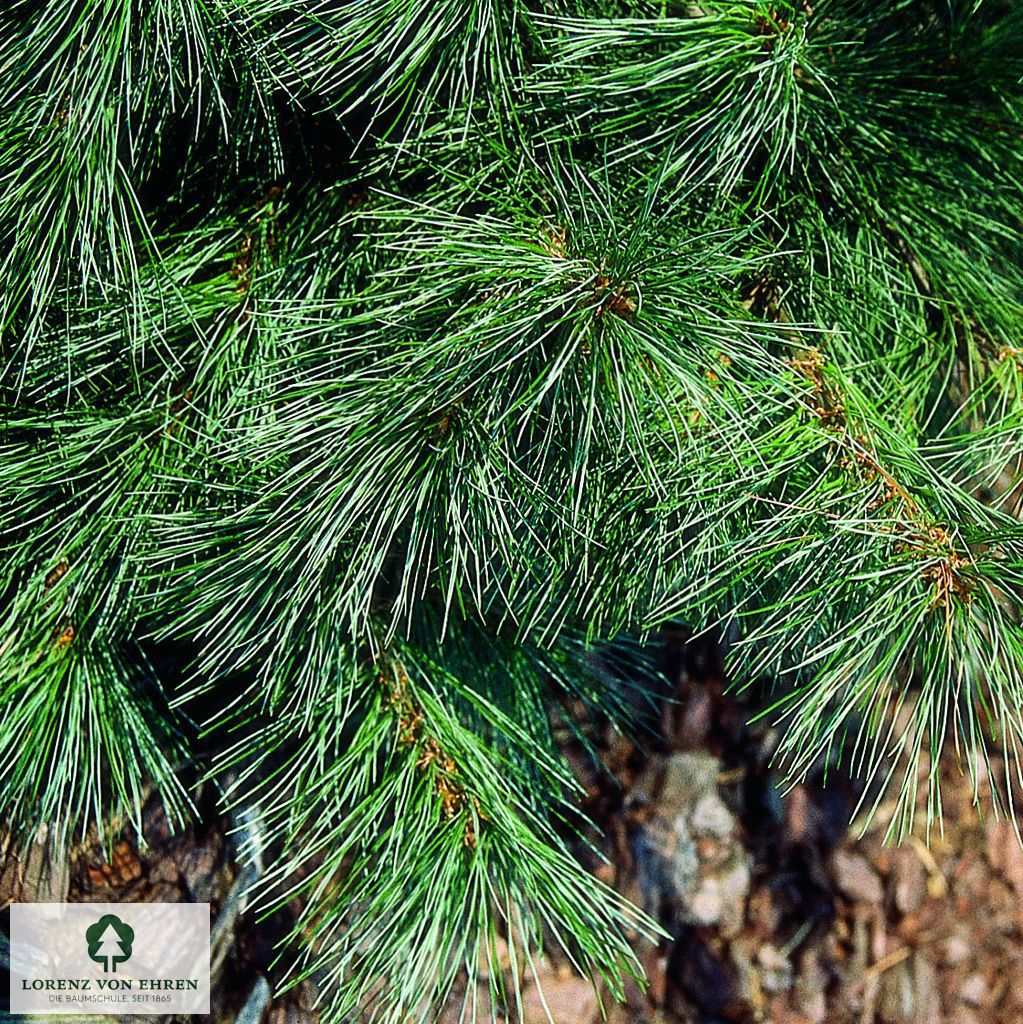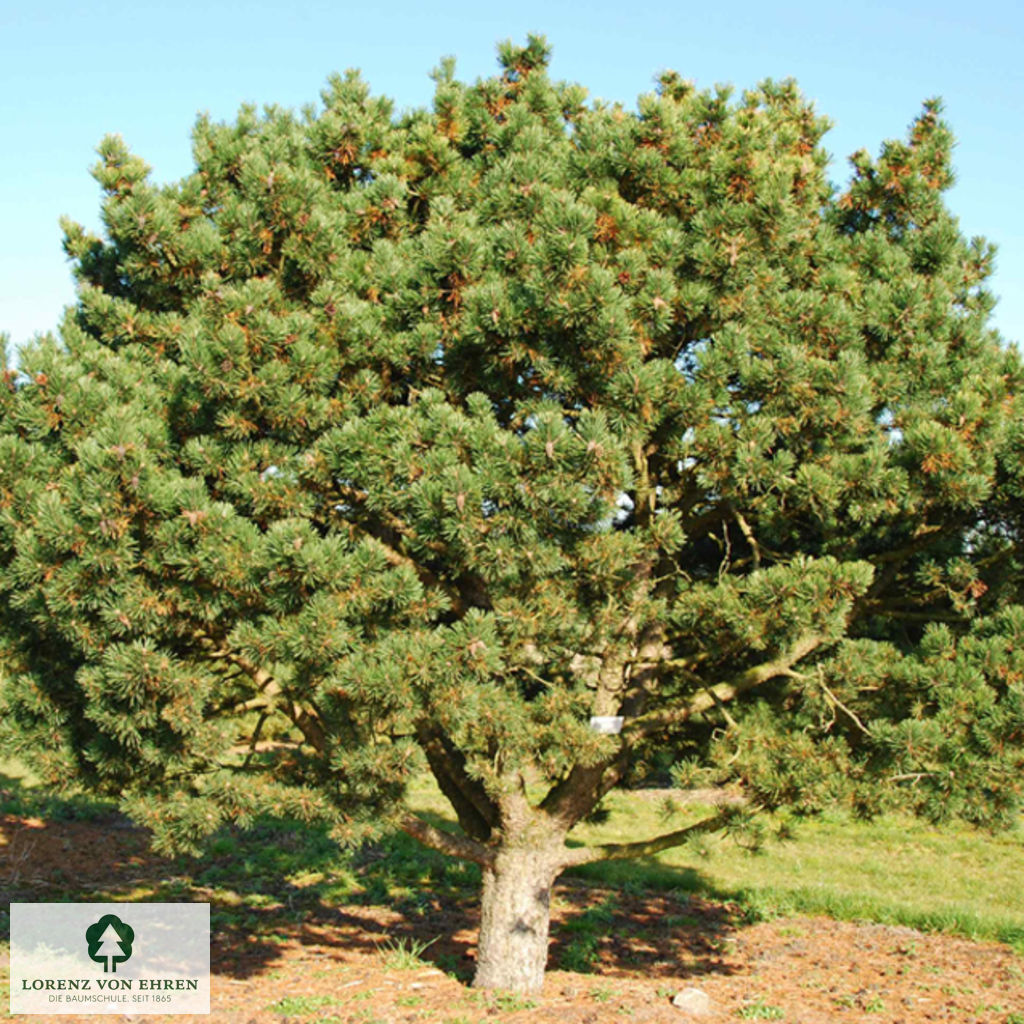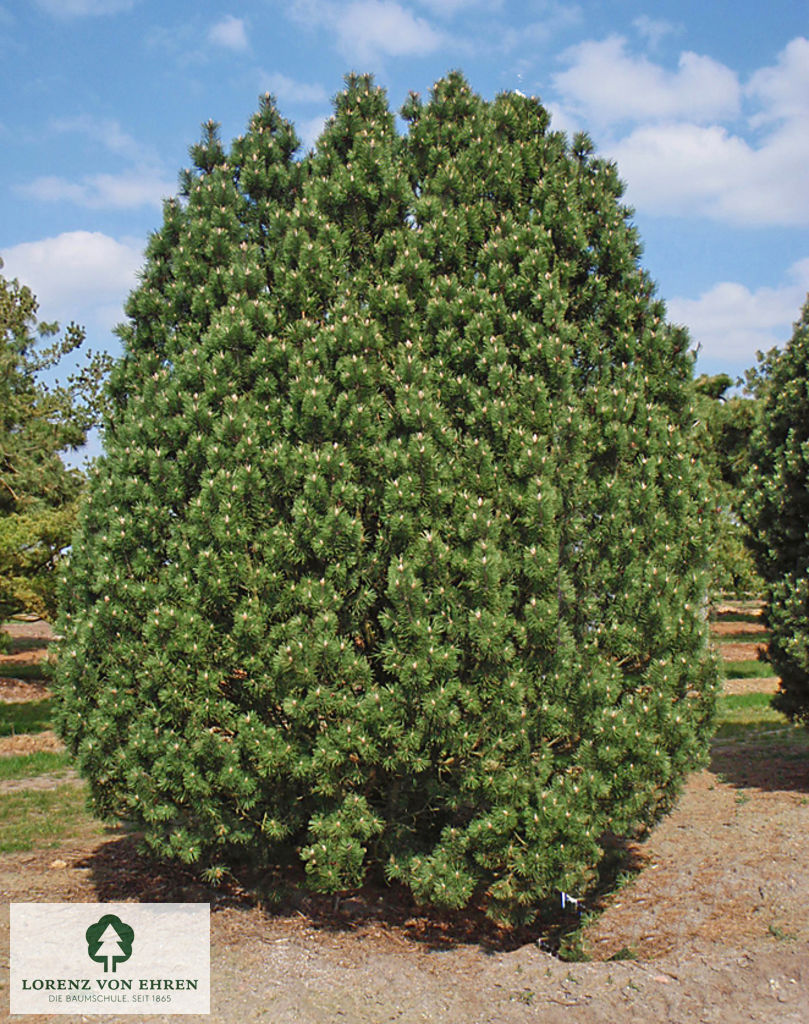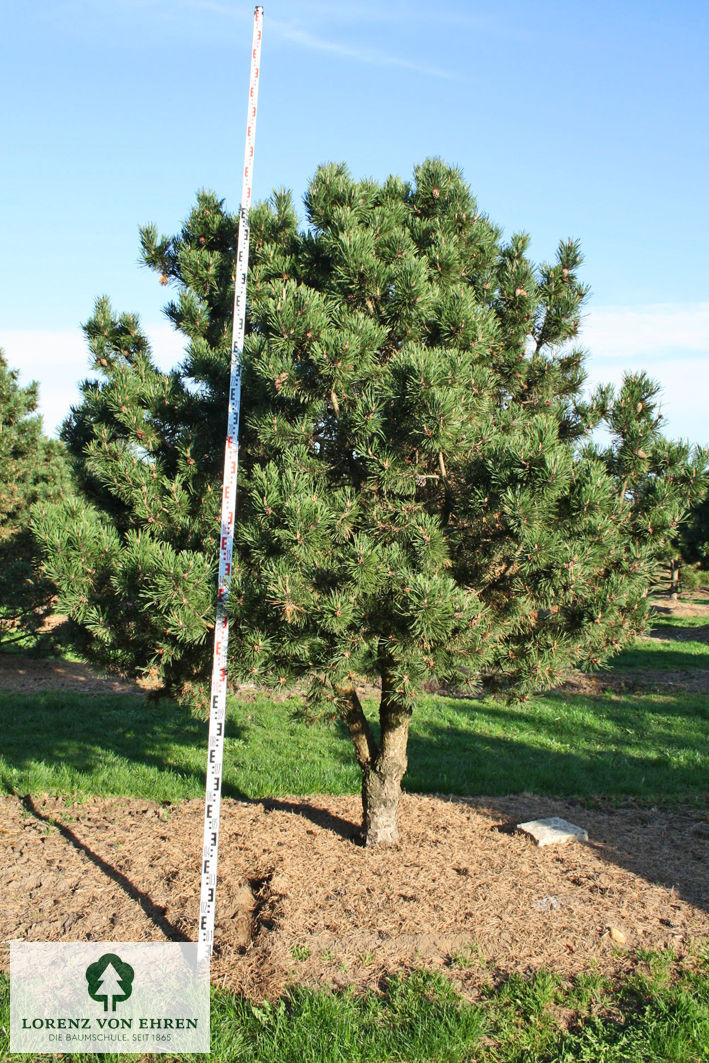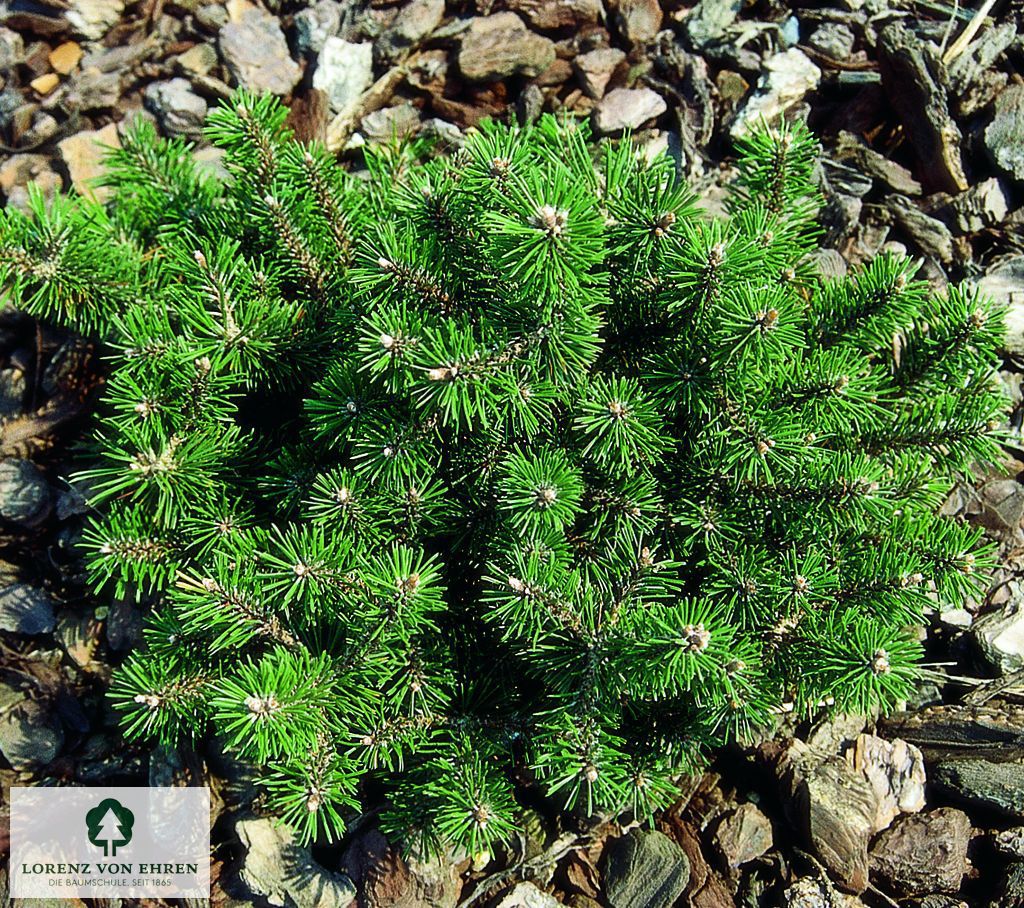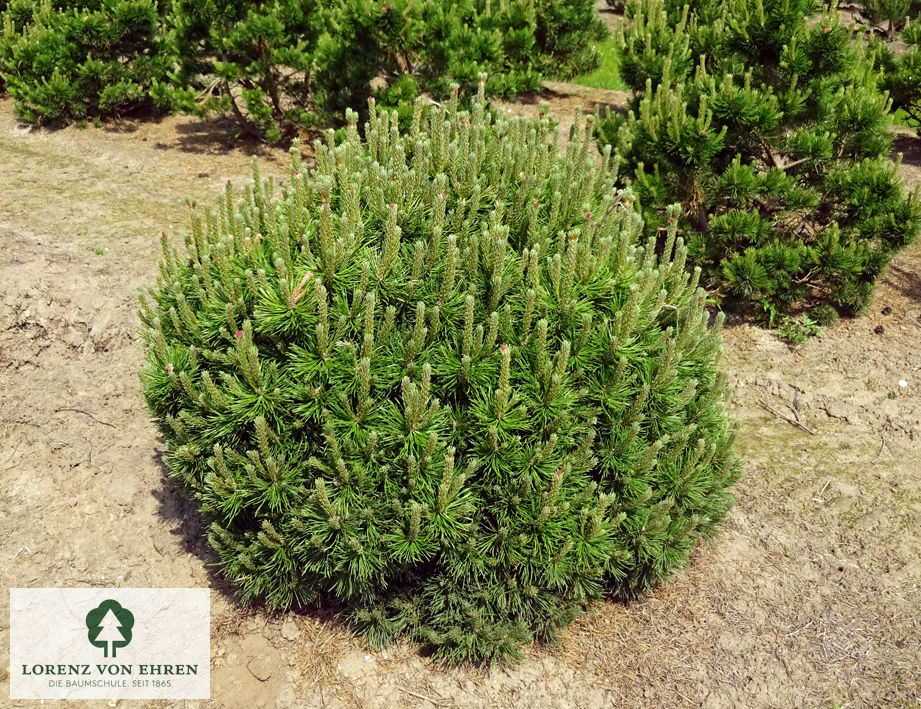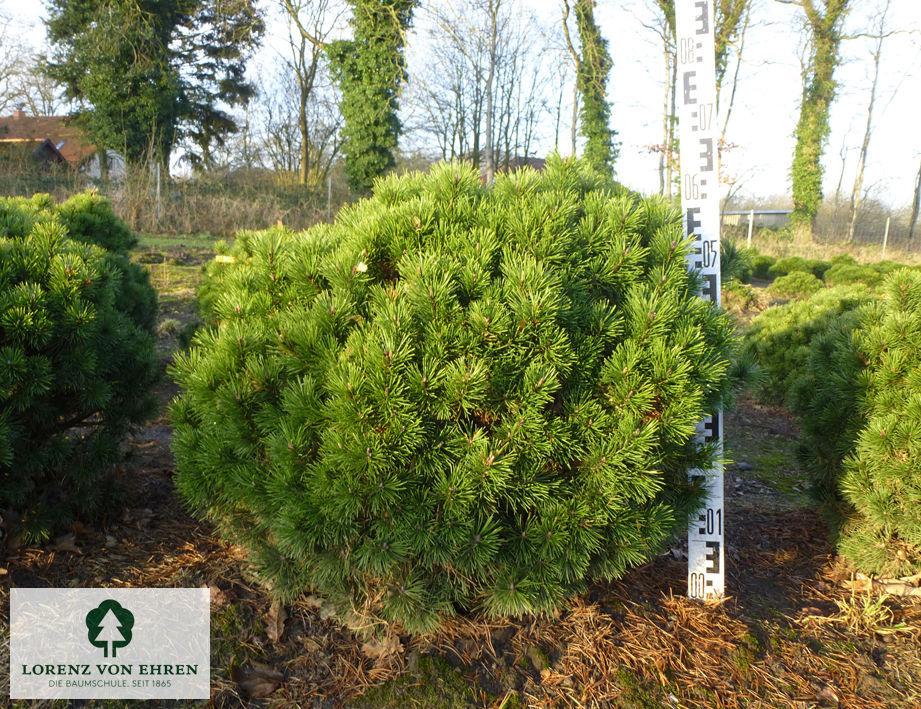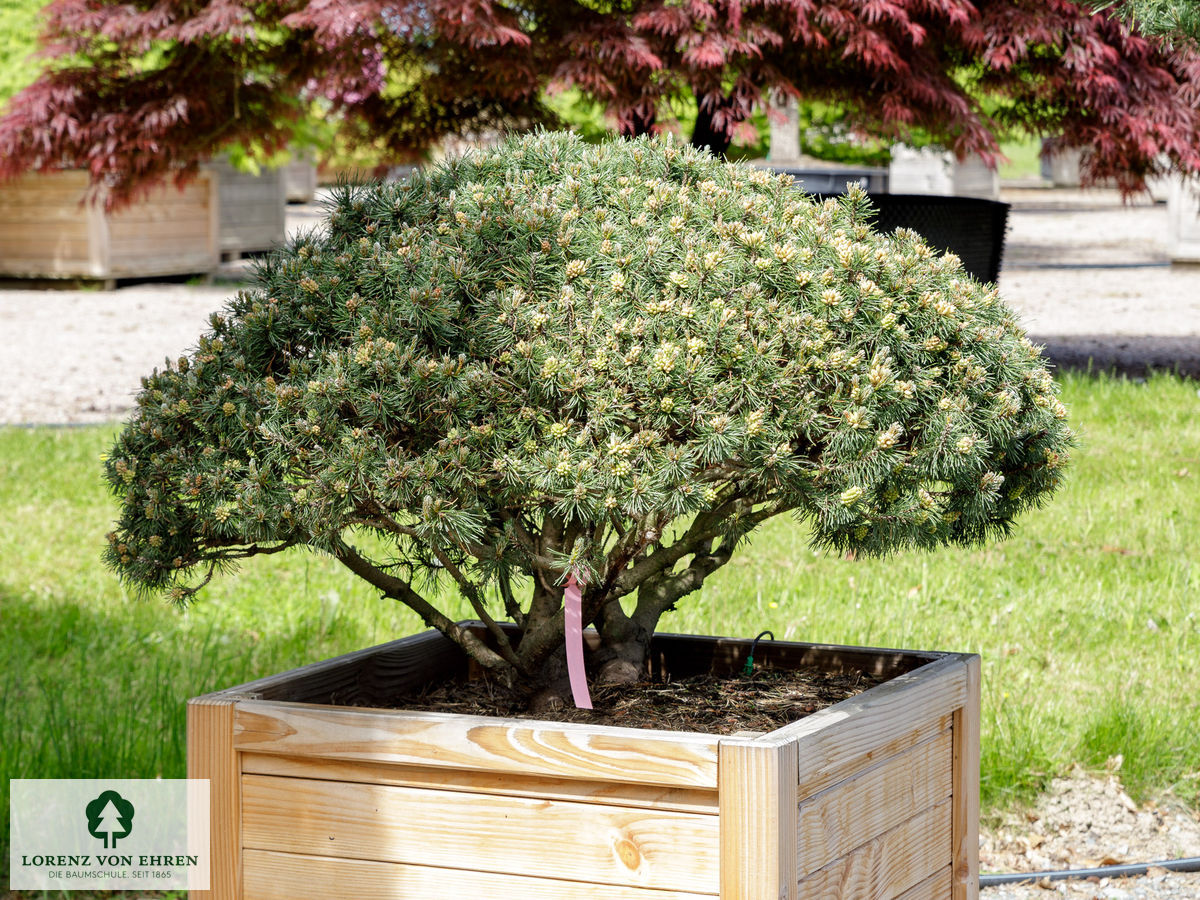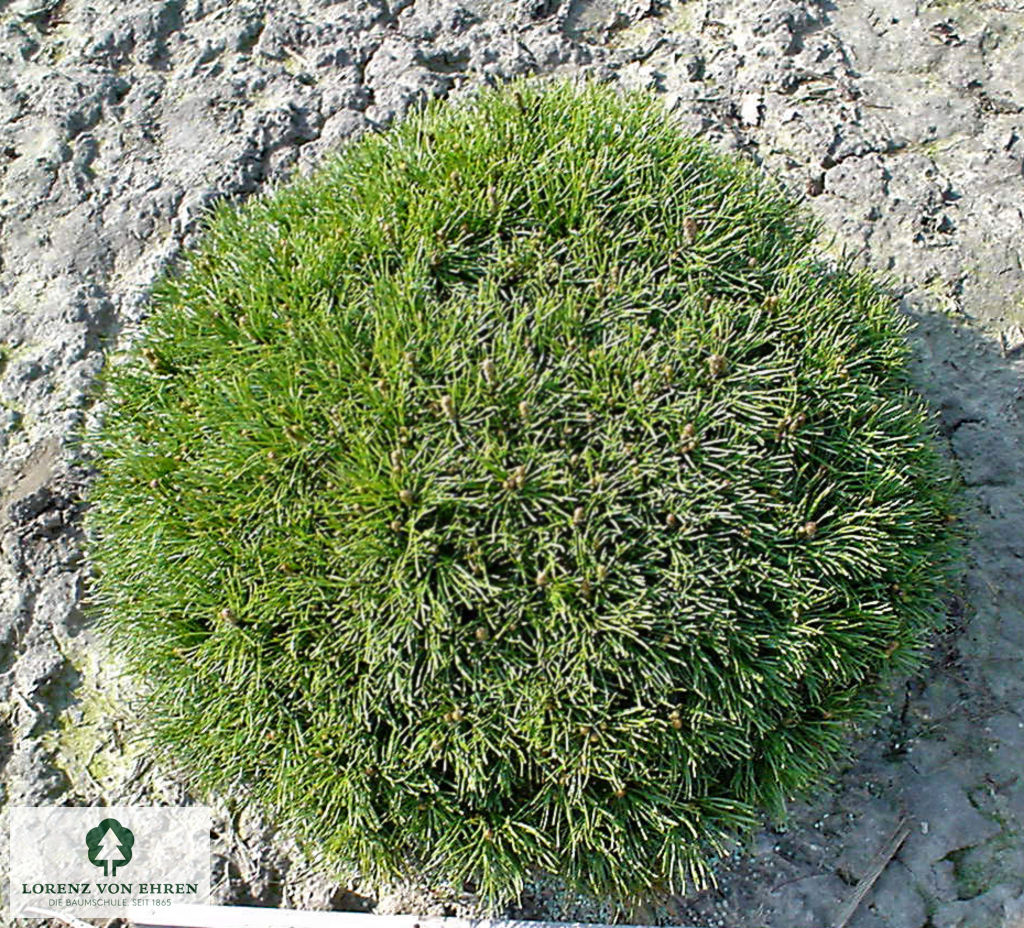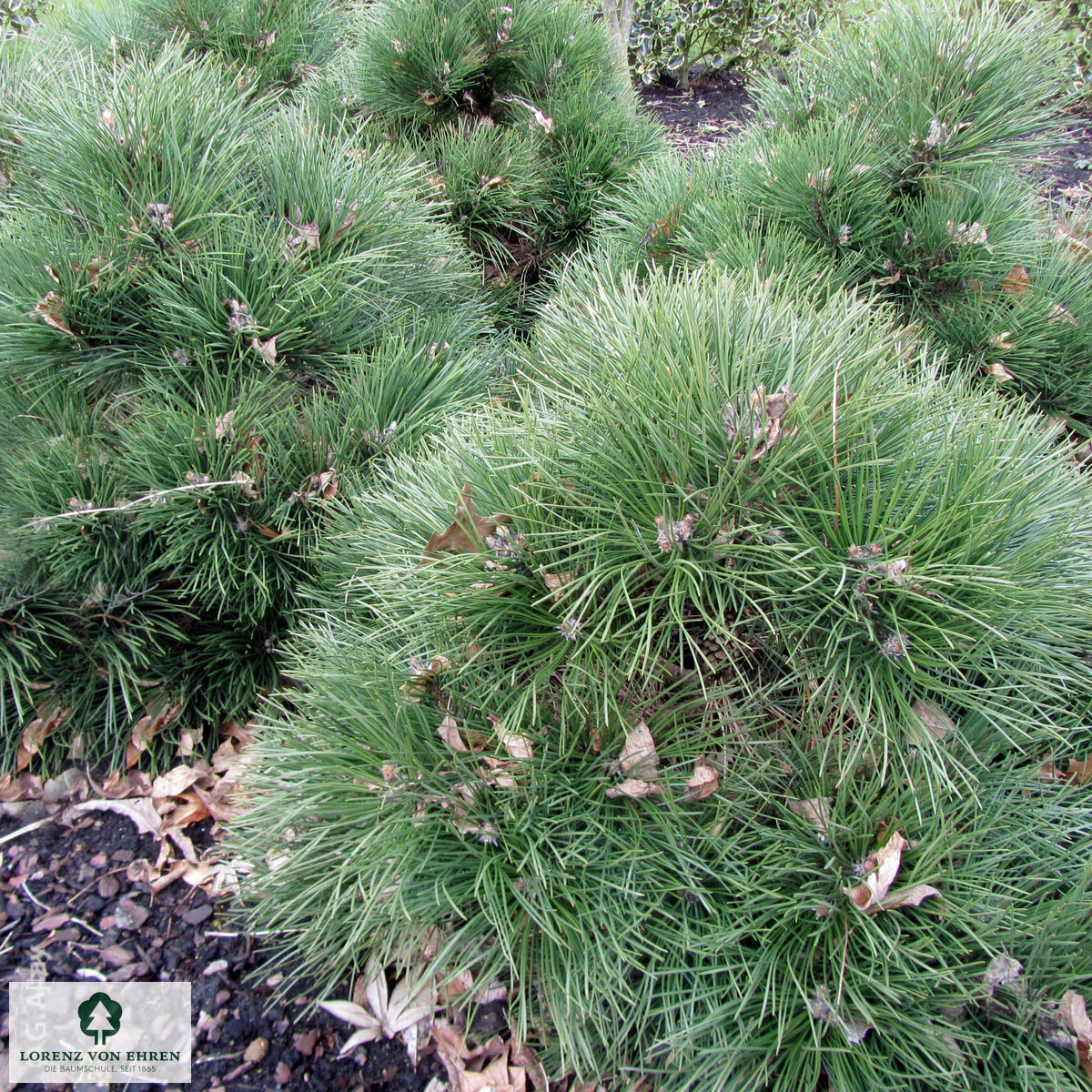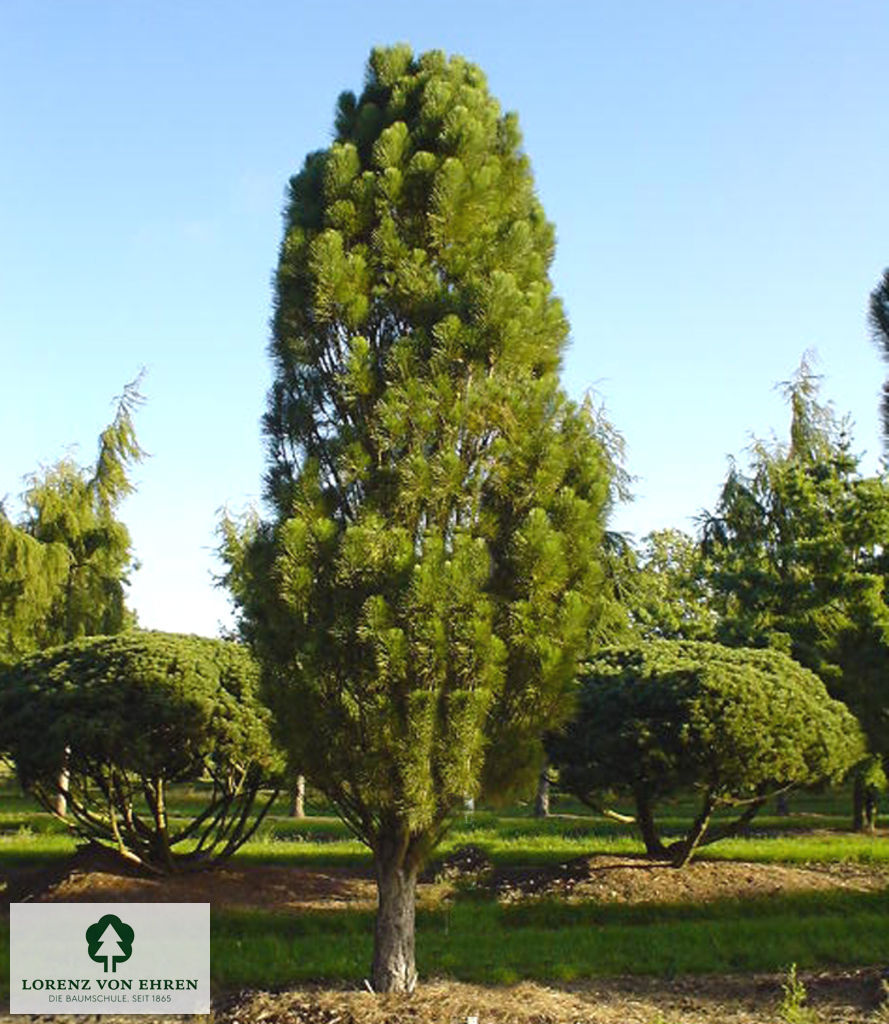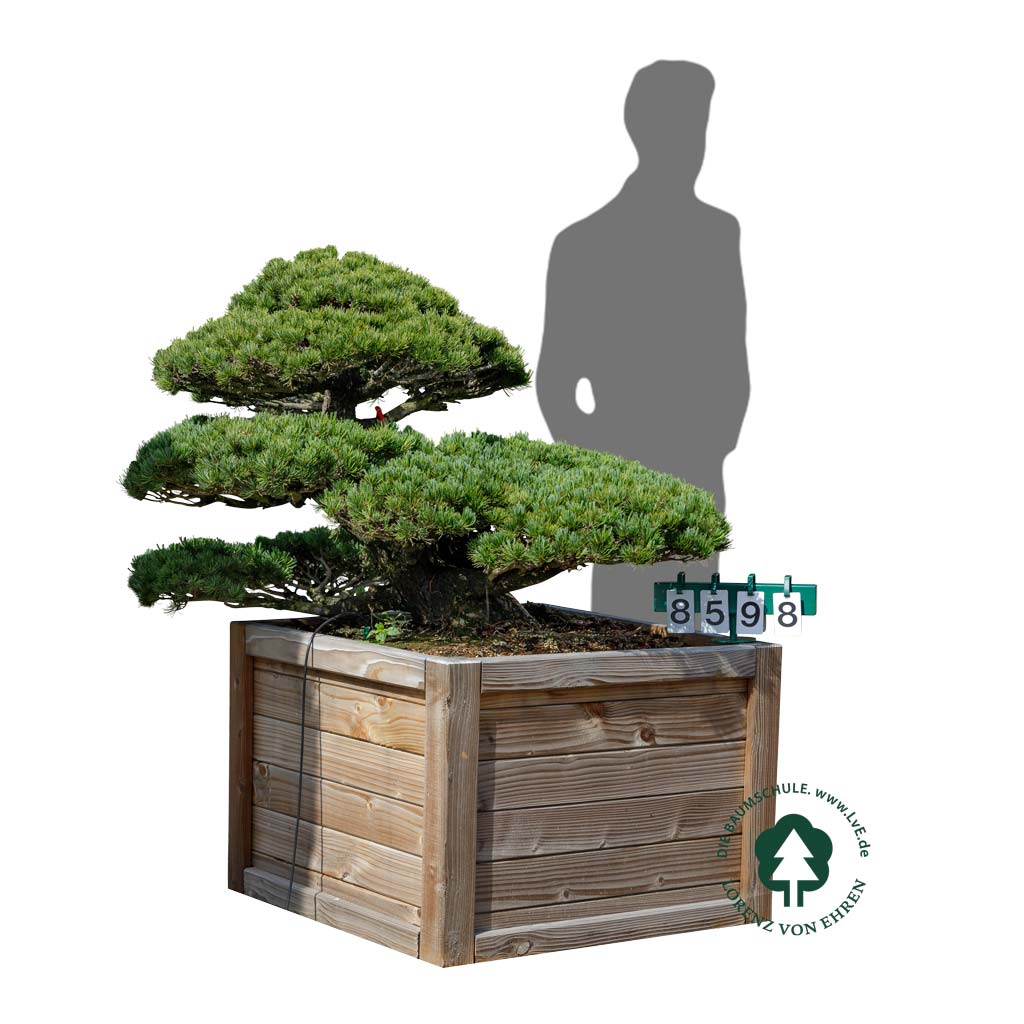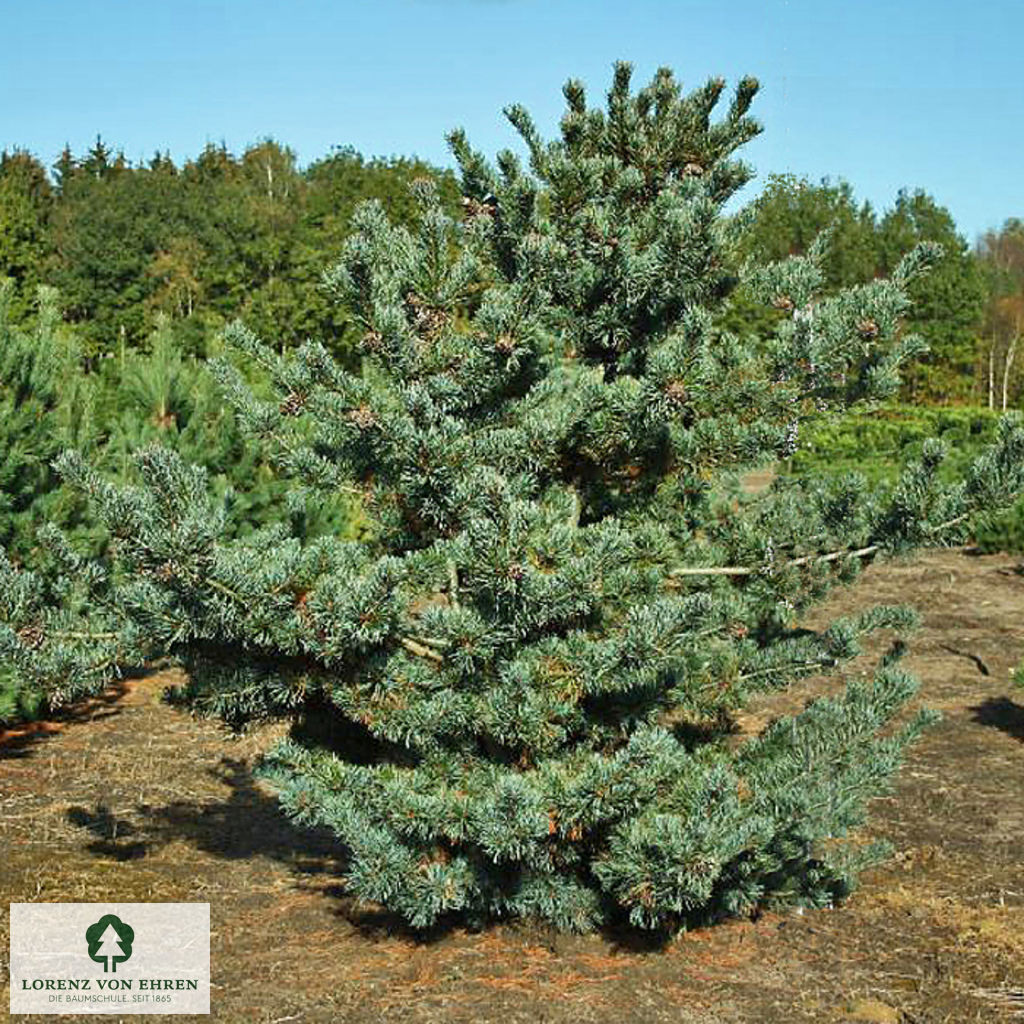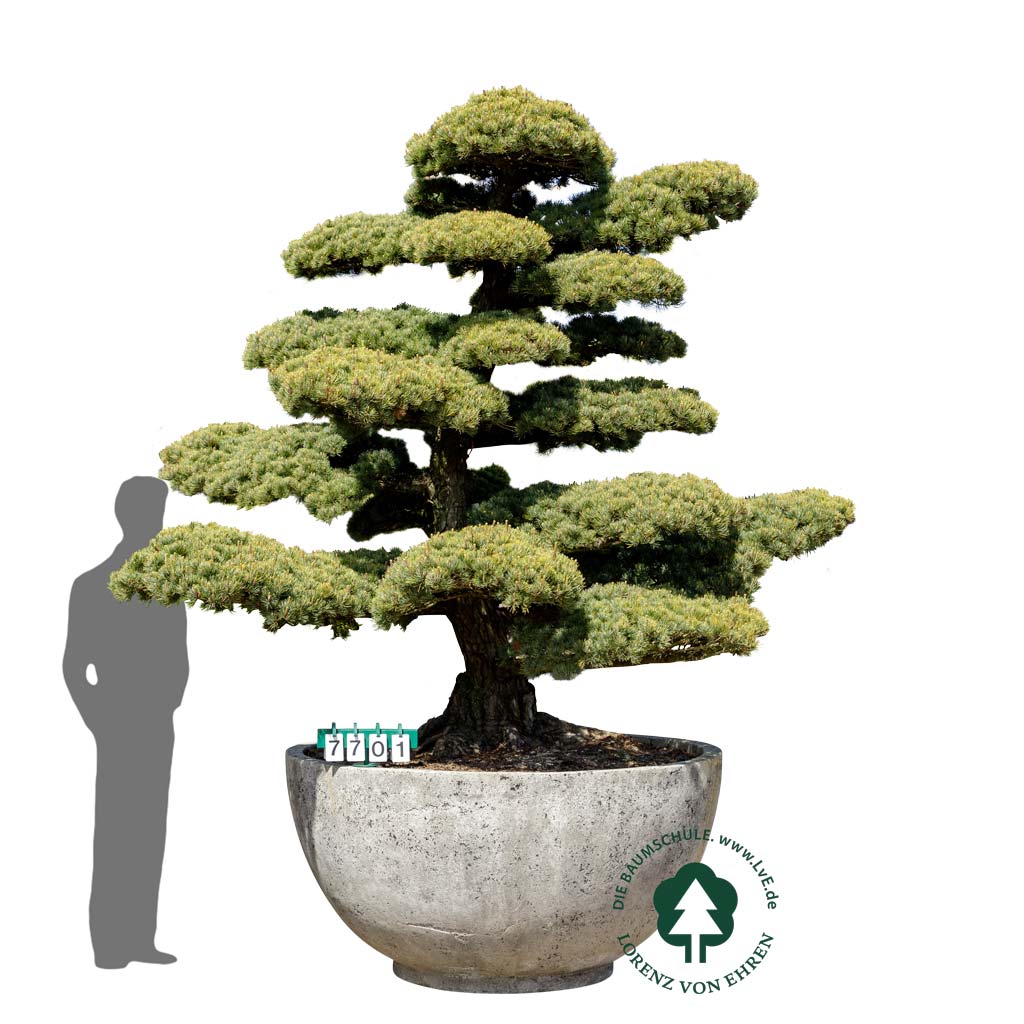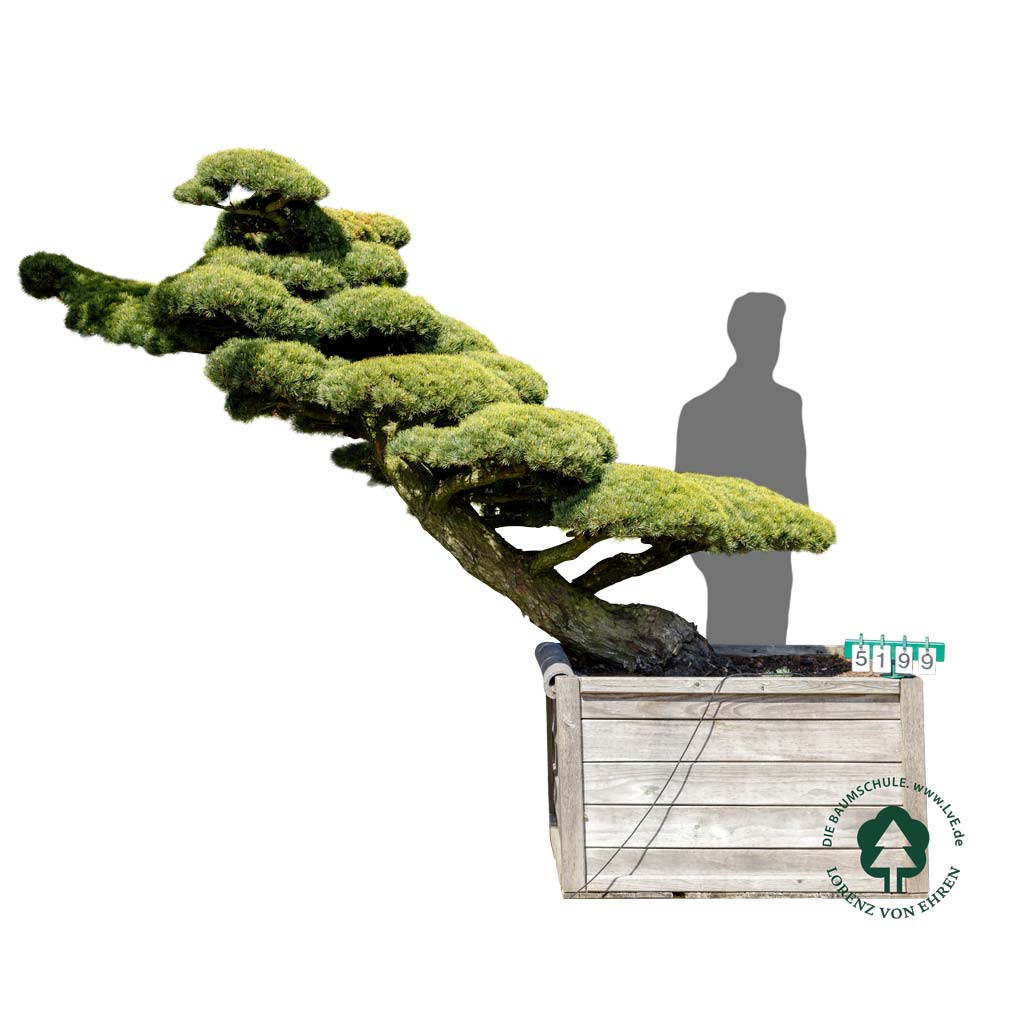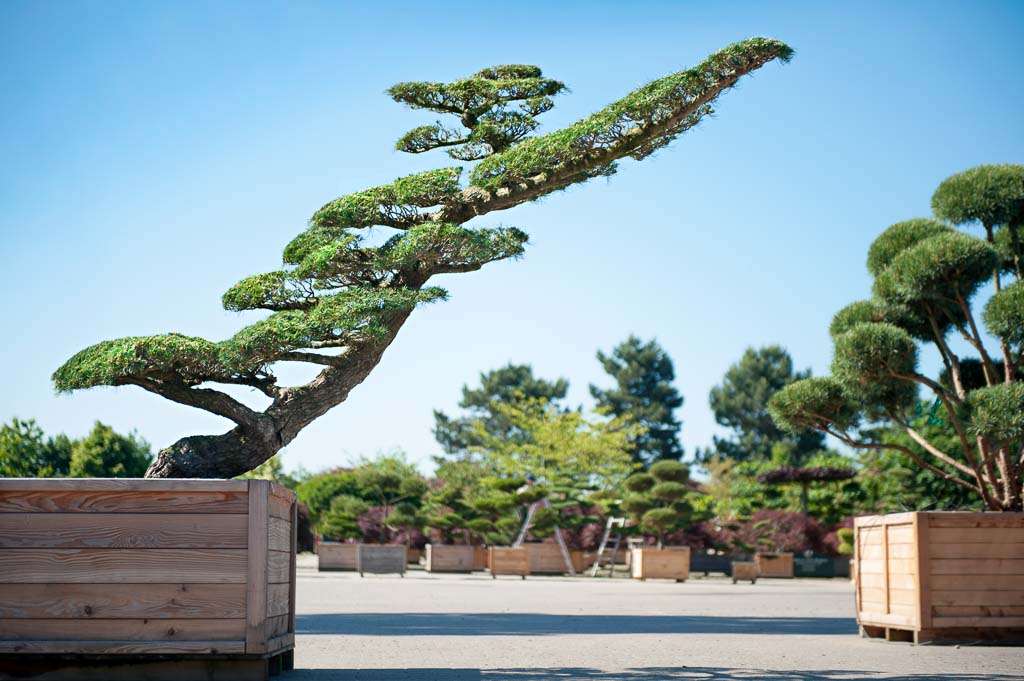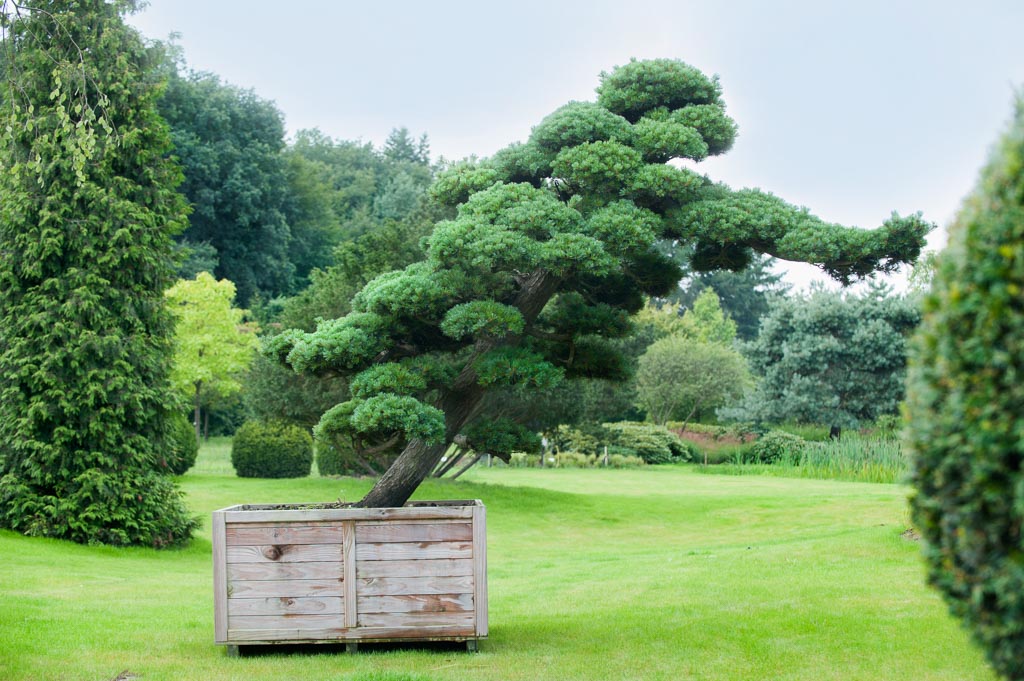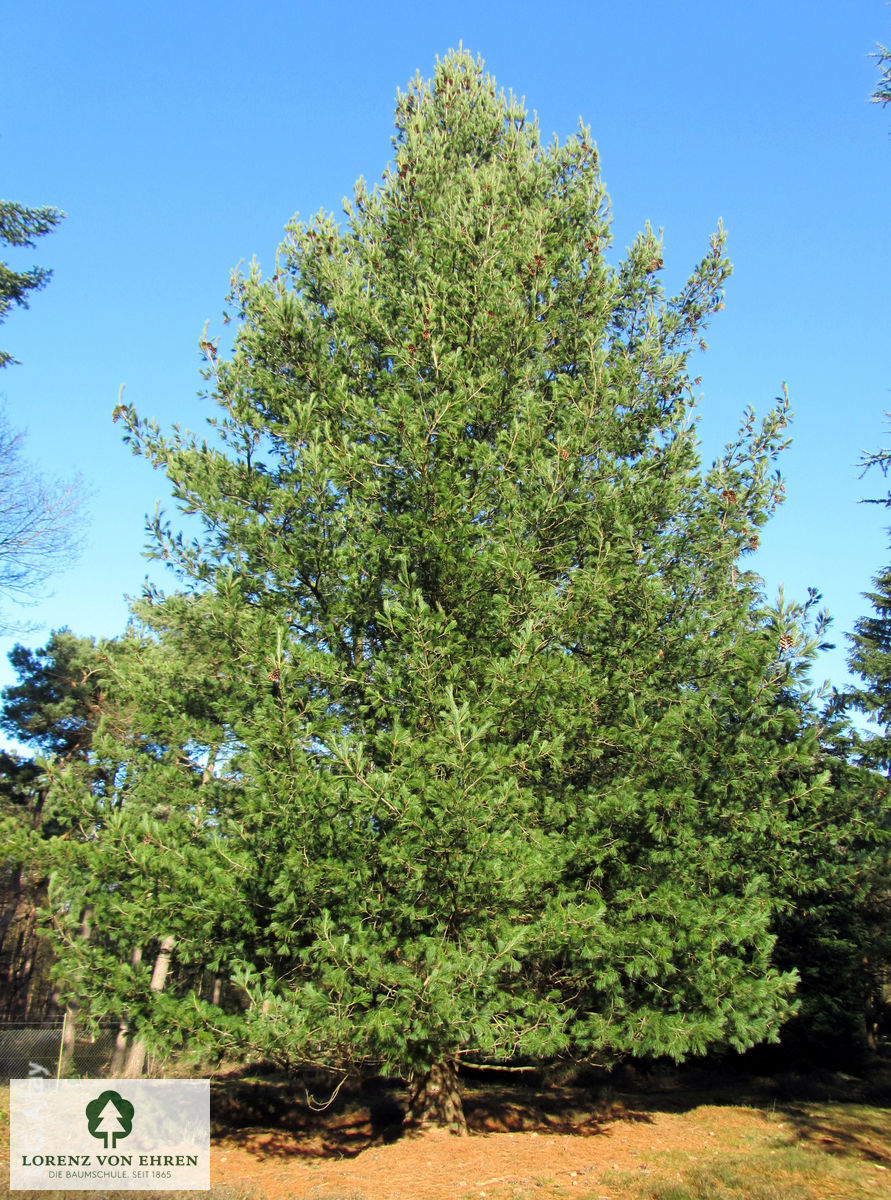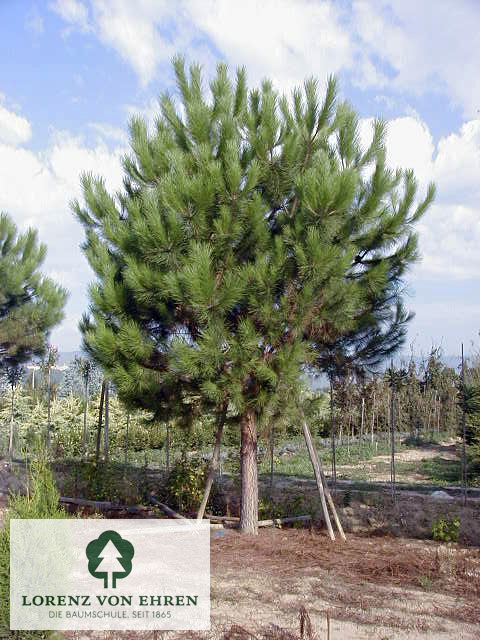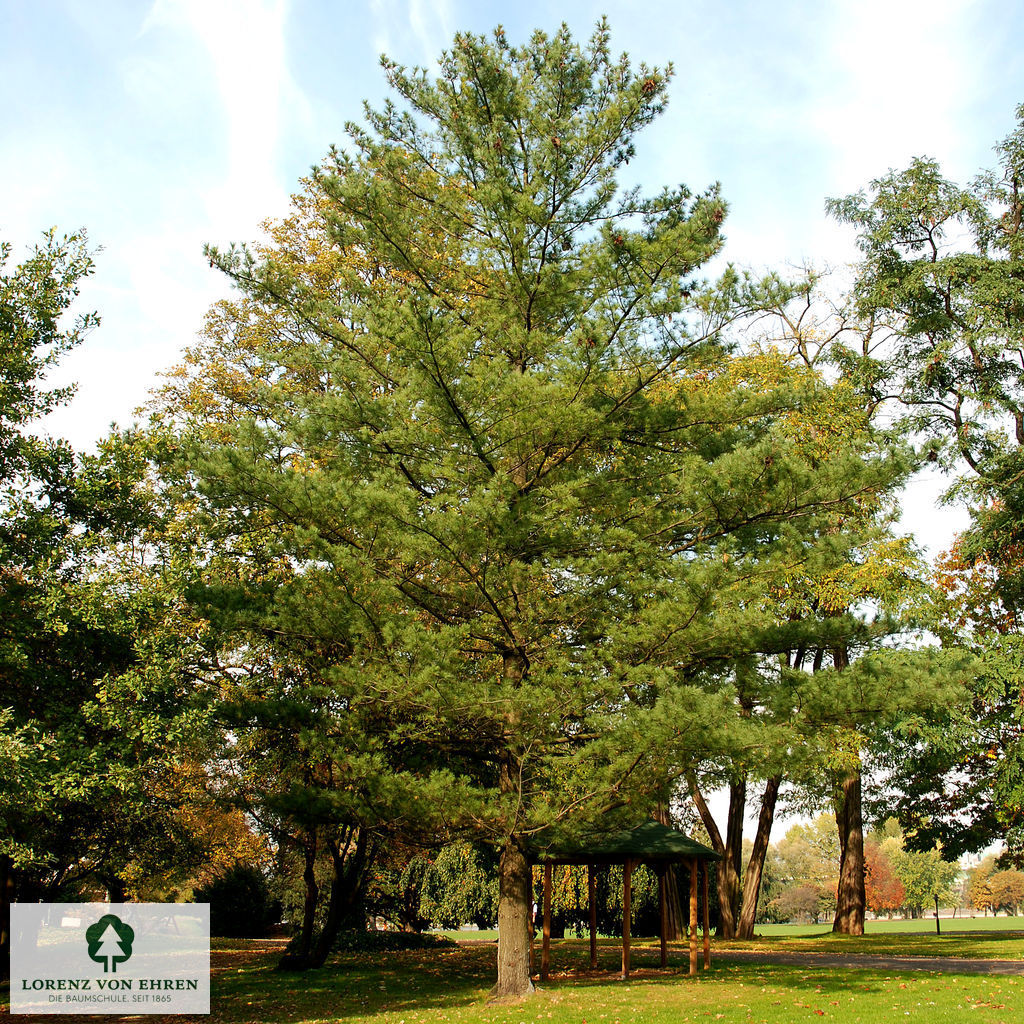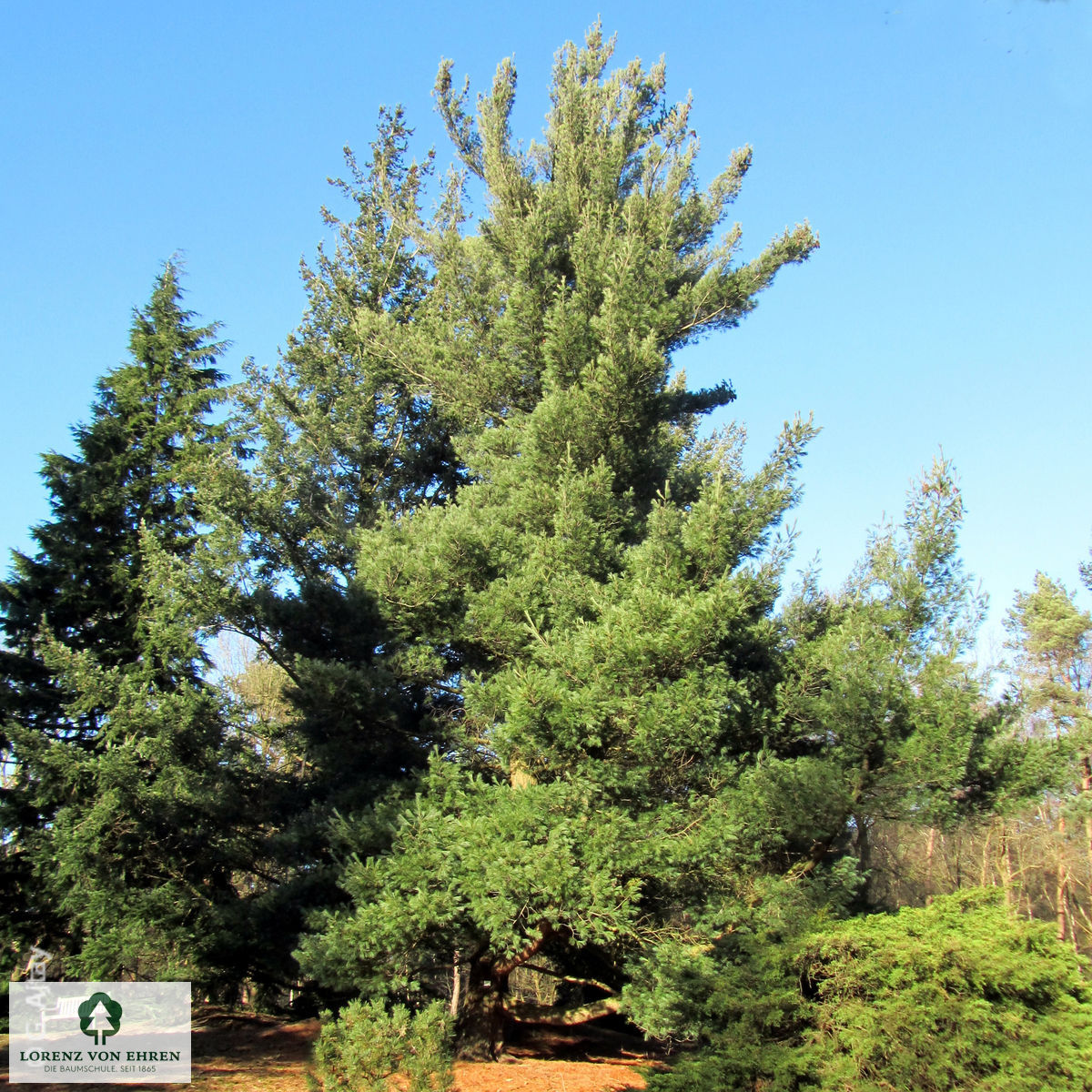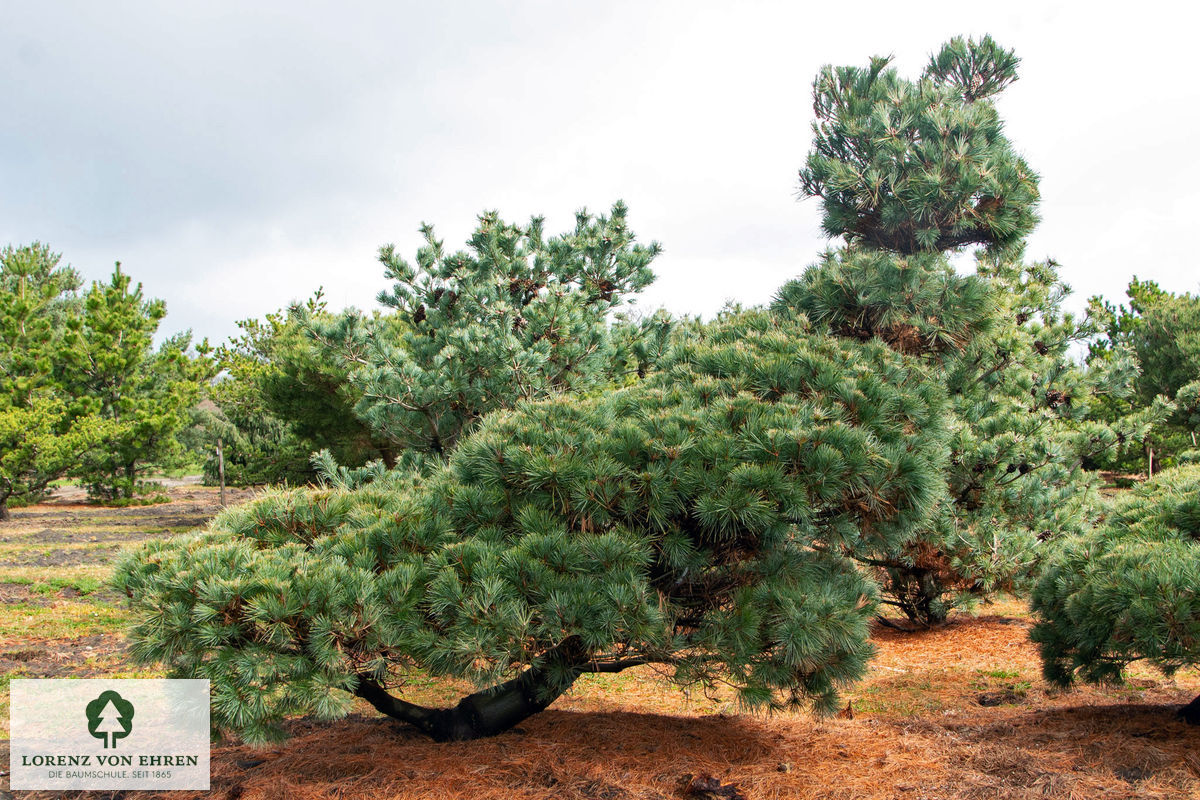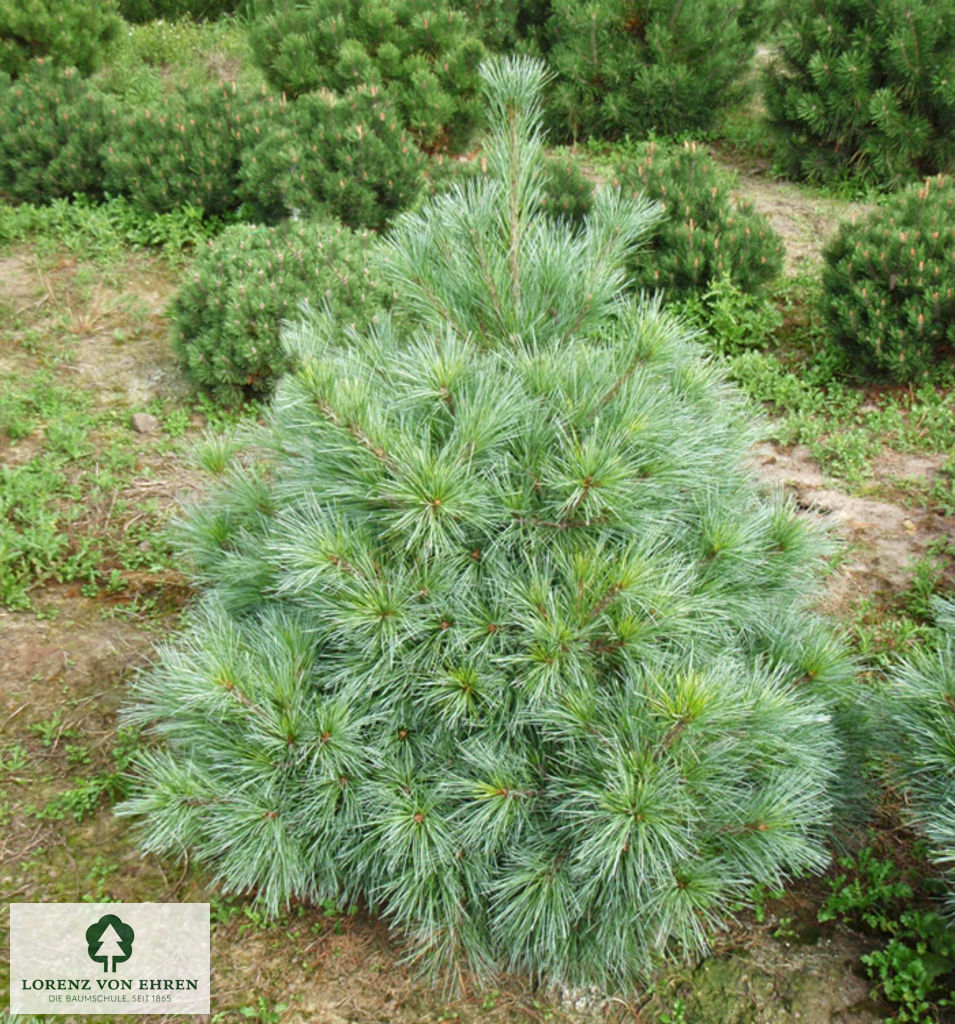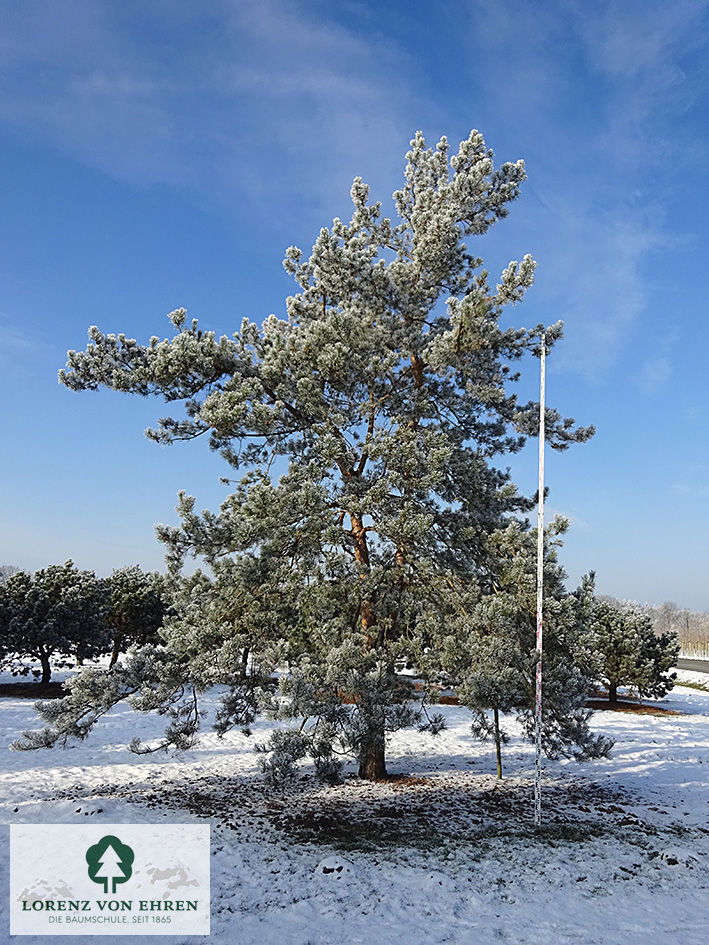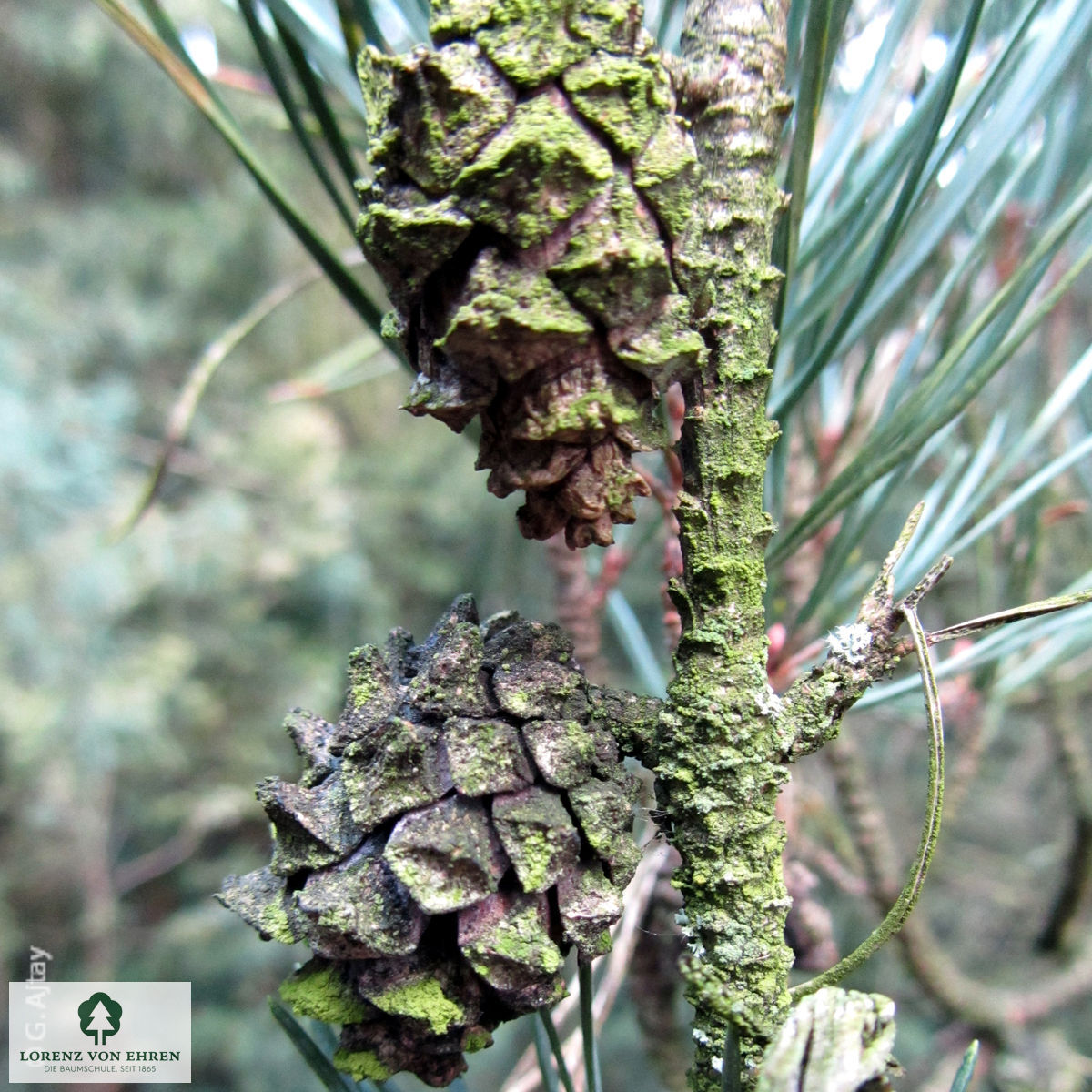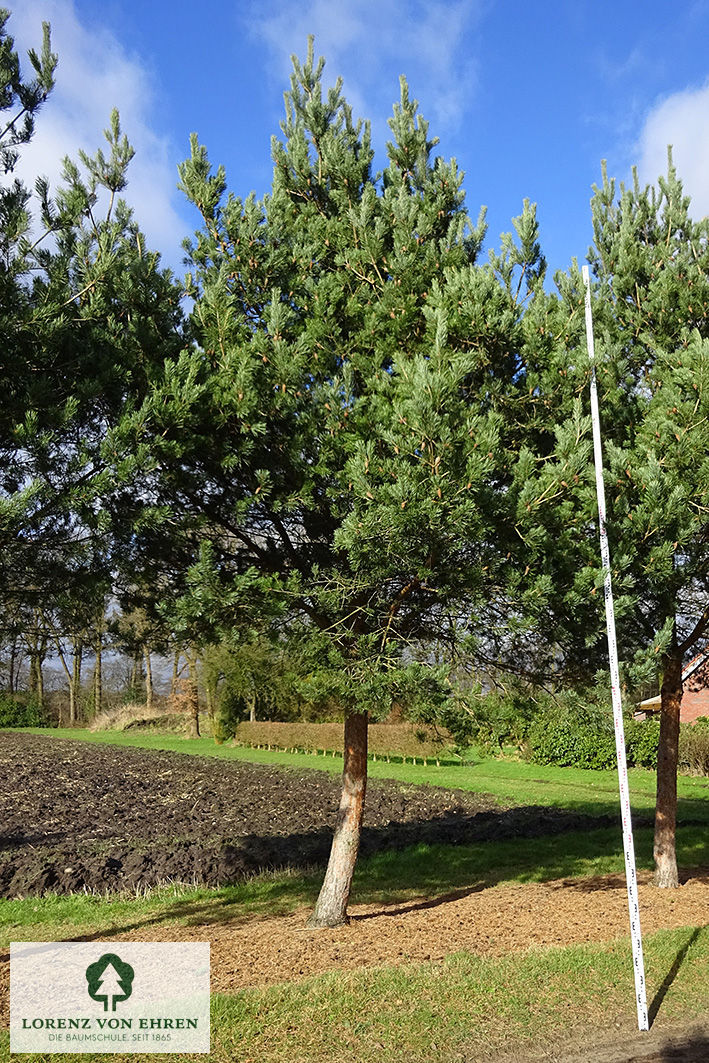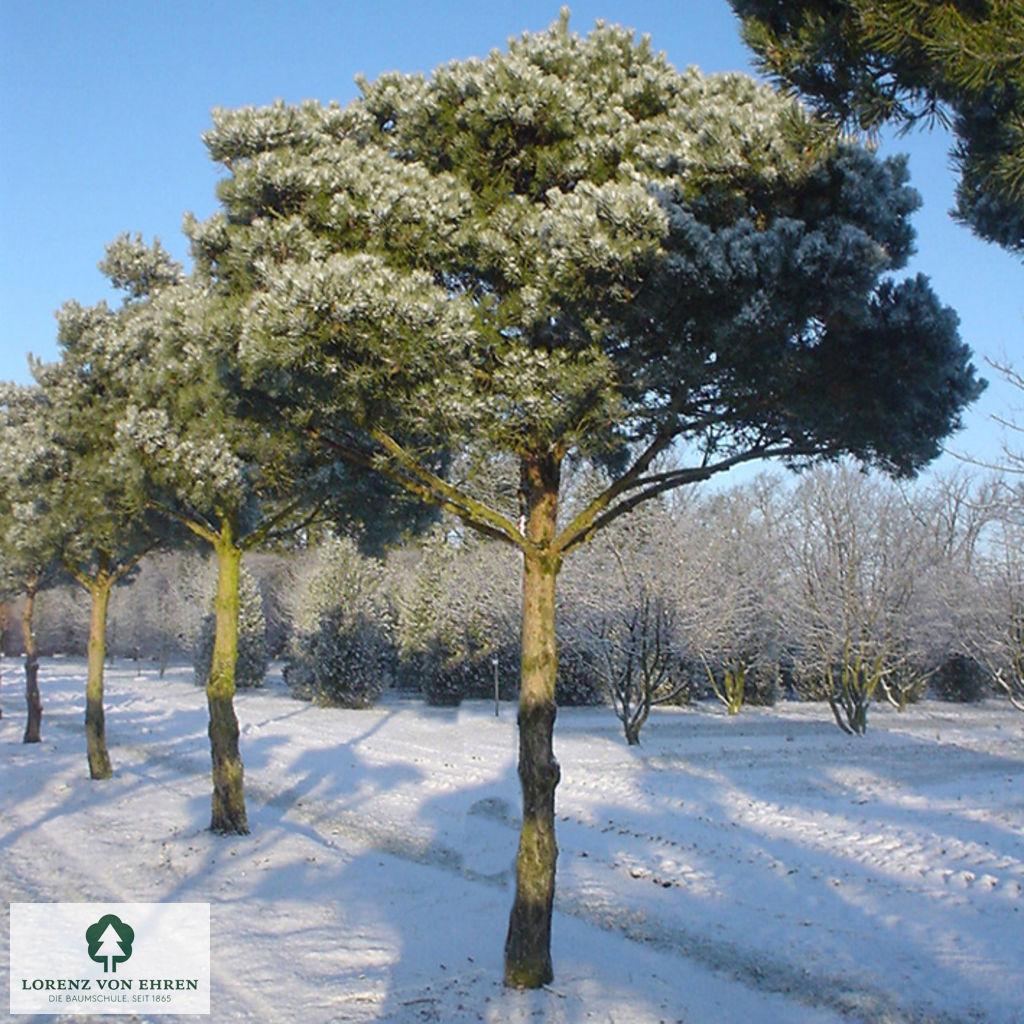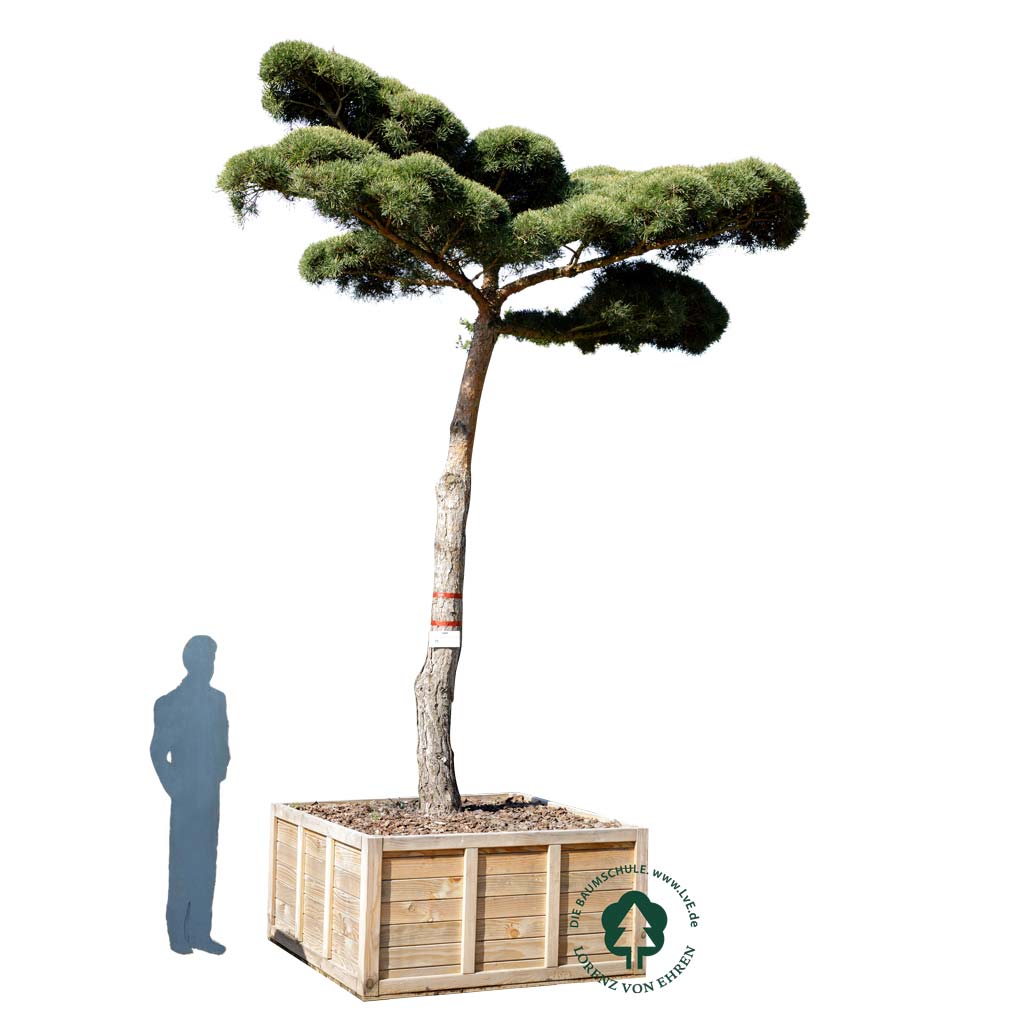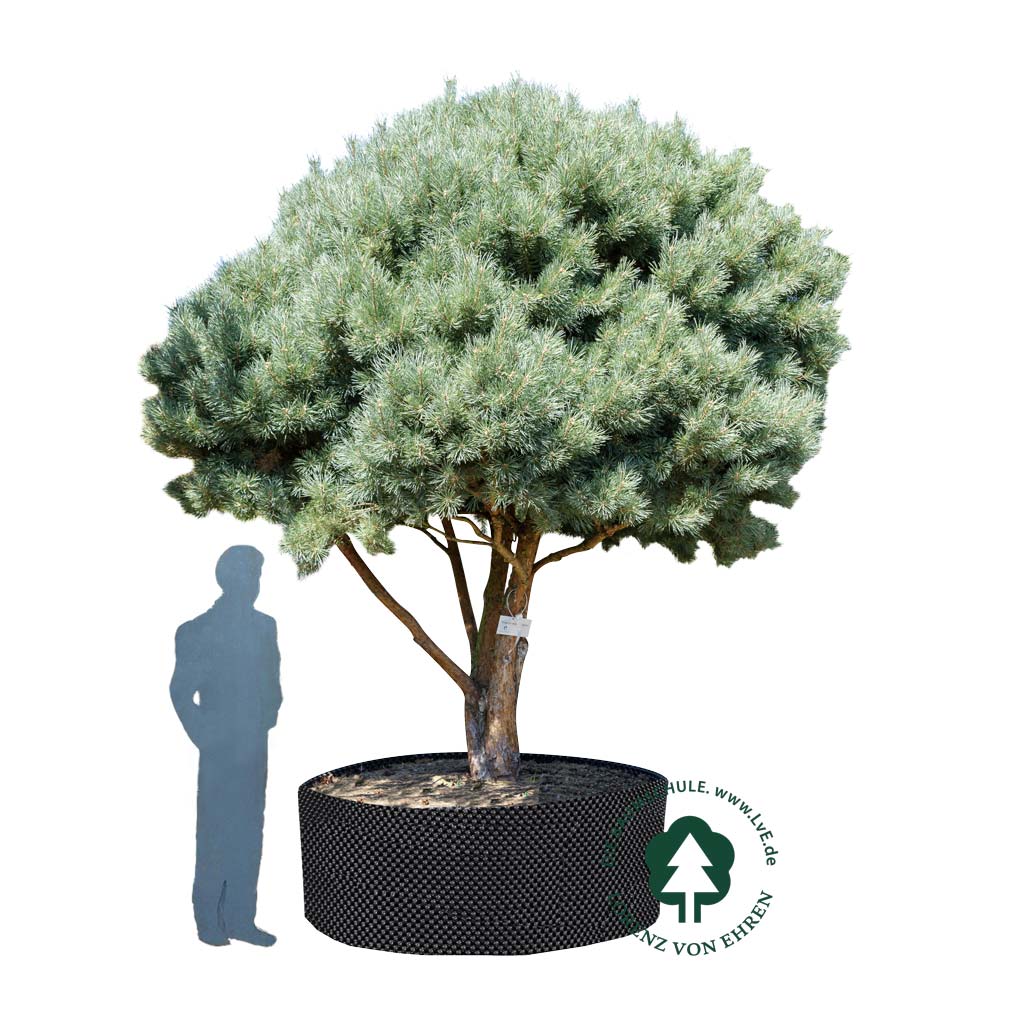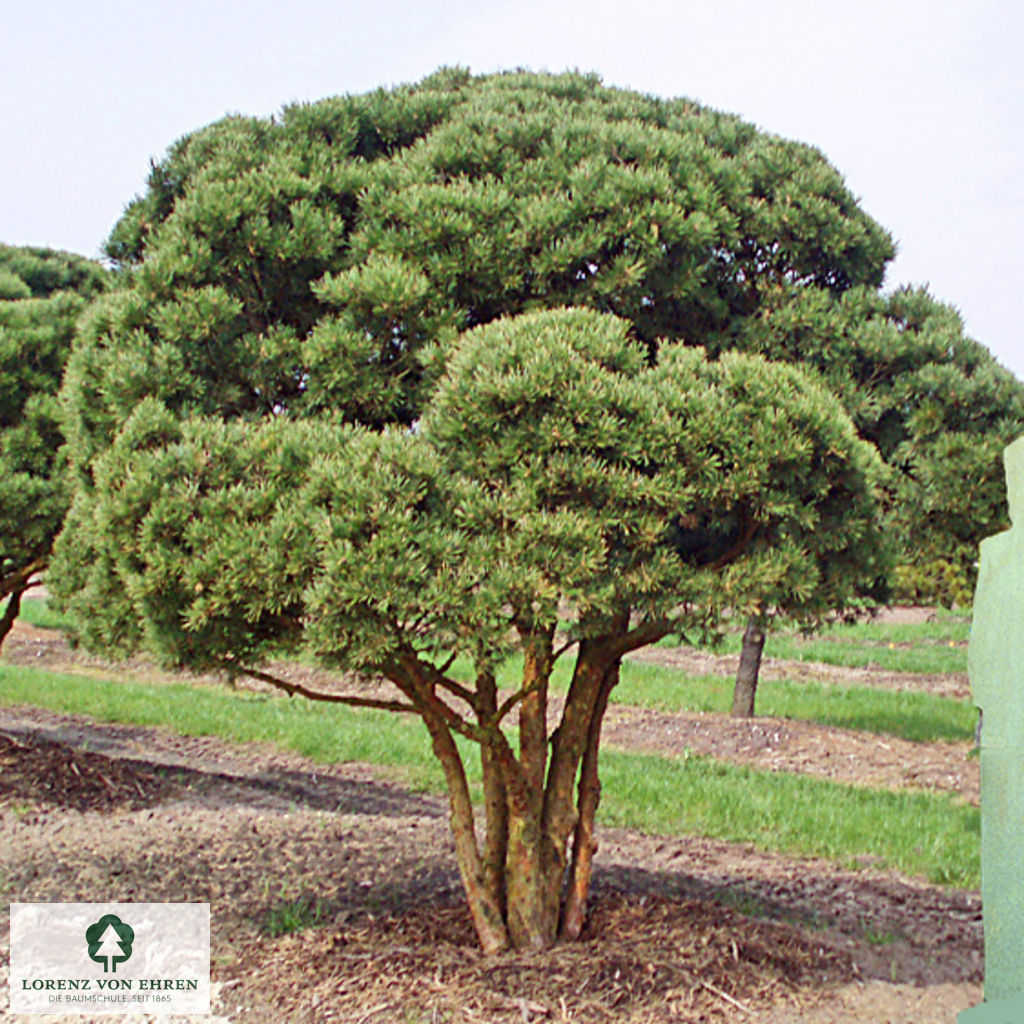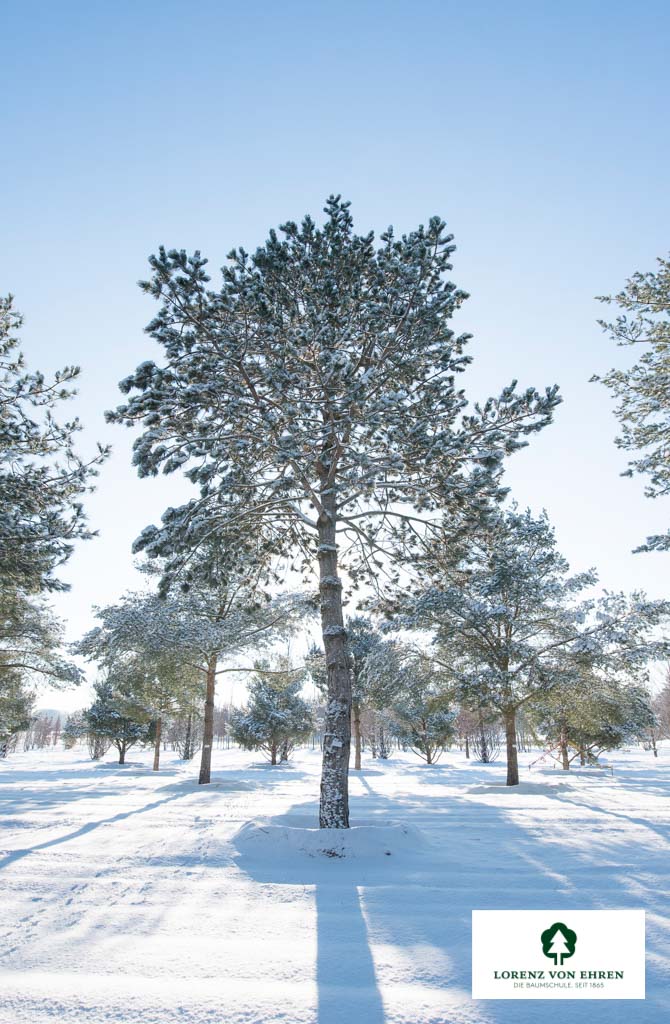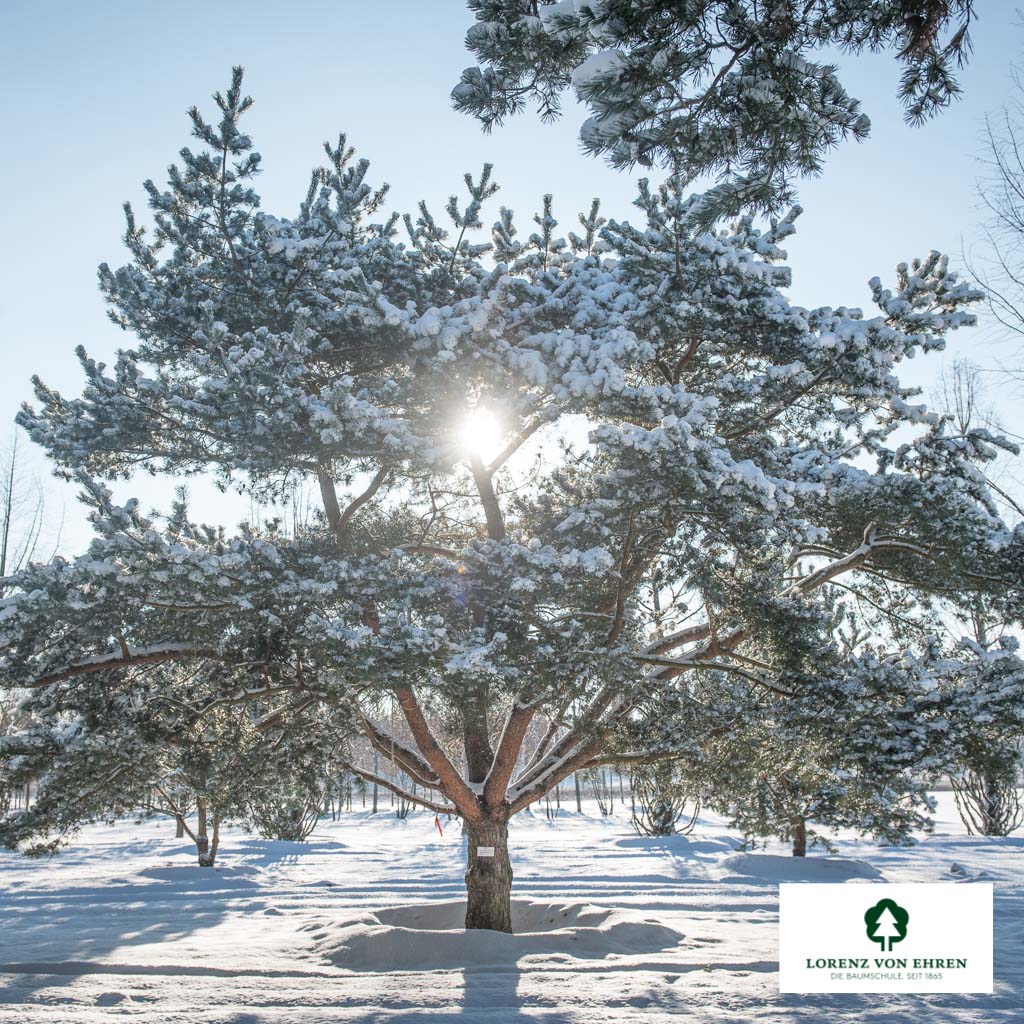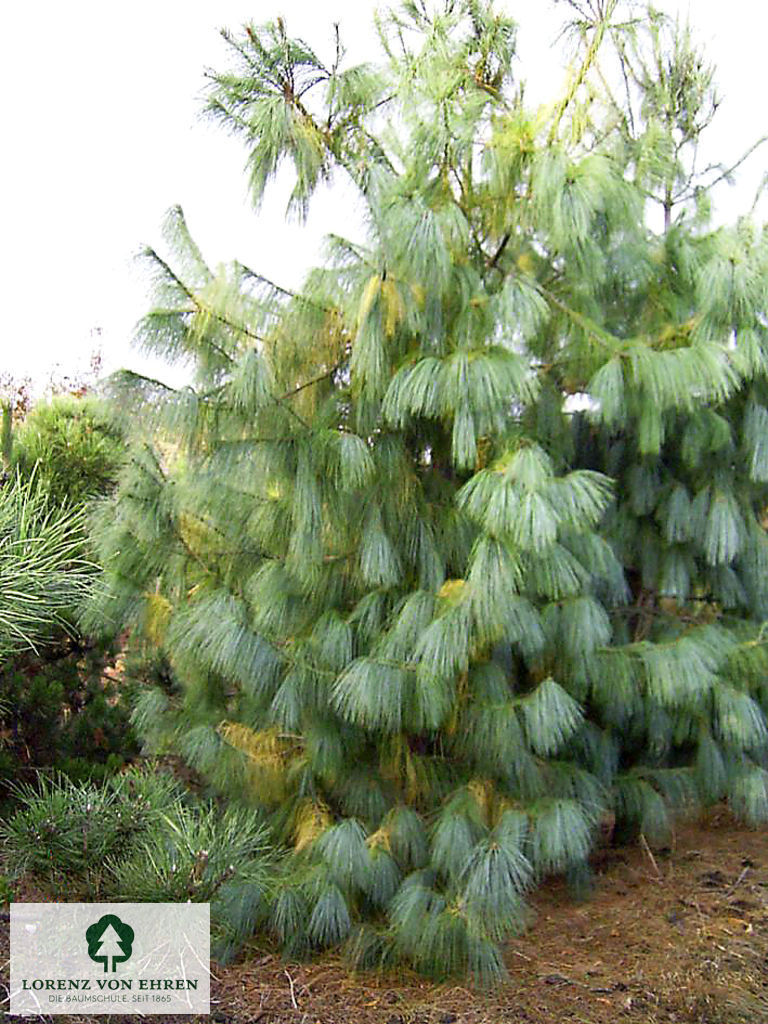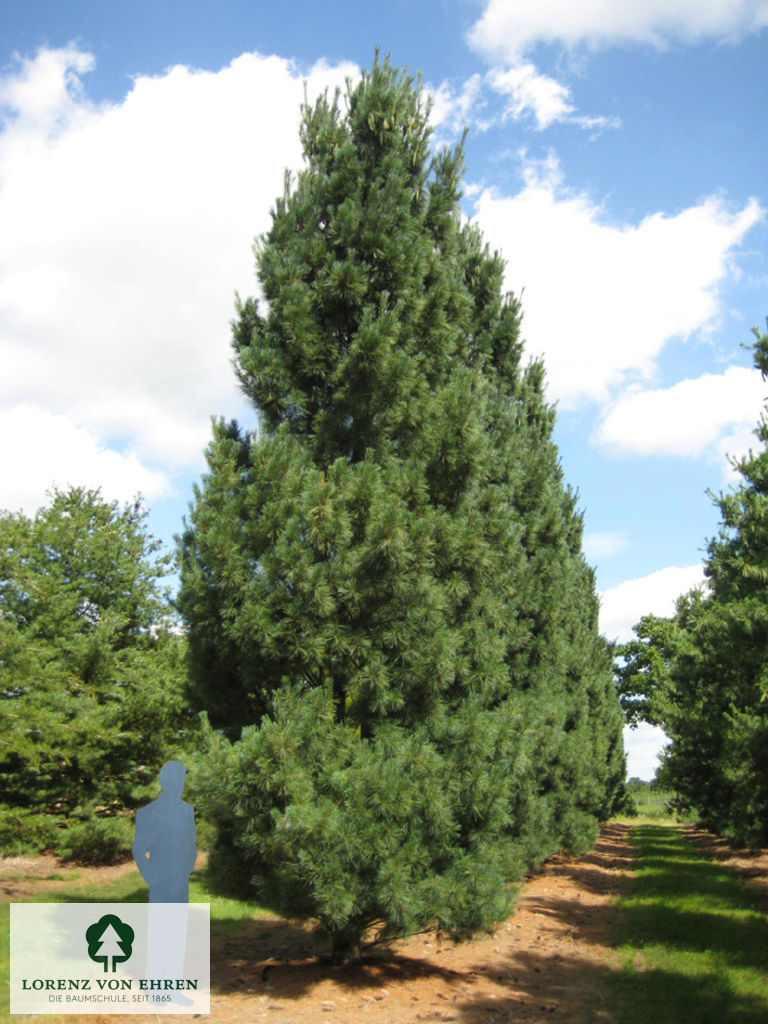Pinus - Pine
Pinaceae
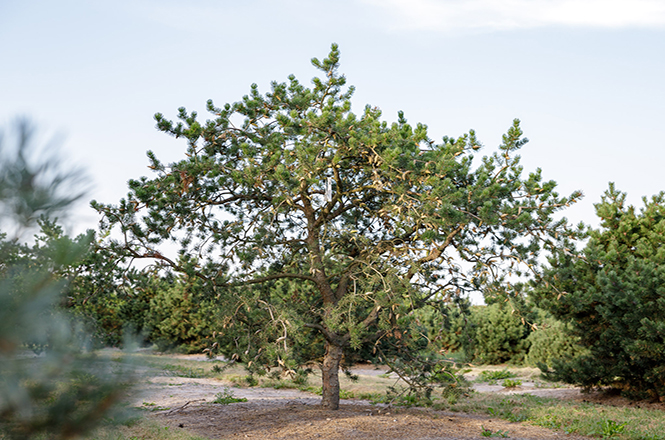
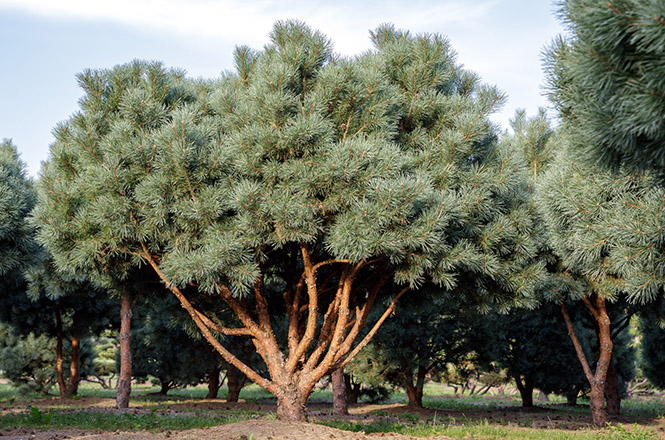
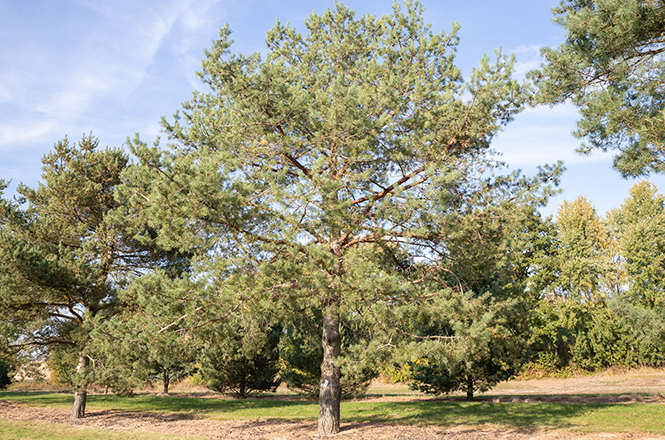
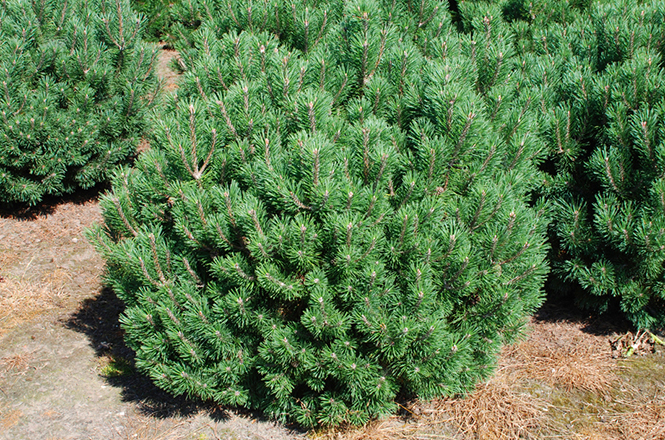
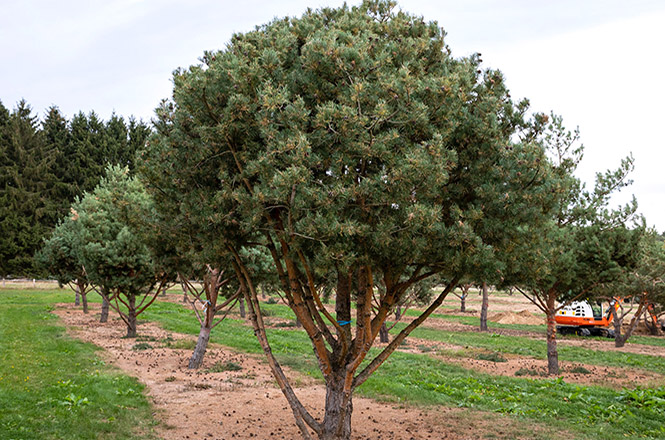
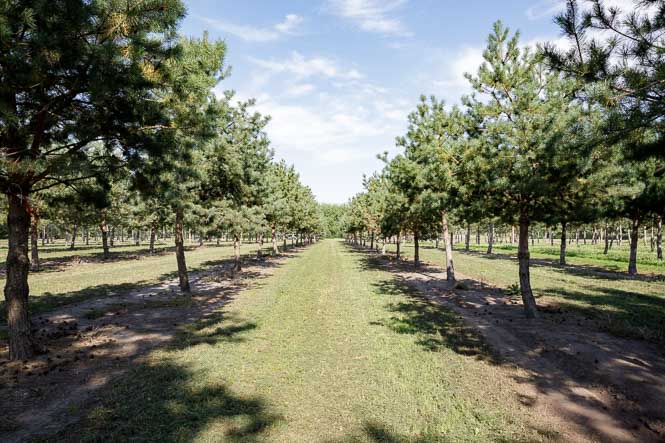
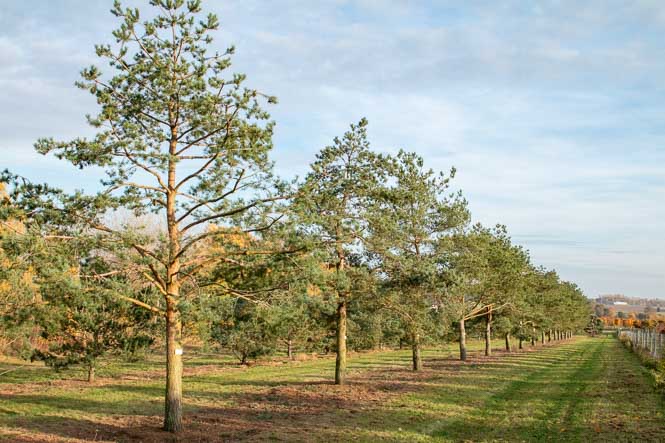
Our Pinus
The largest and most varied group of conifers by far is the pines. The genus Pinus comprises over 100 species, including all imaginable habits from giant trees to prostrate shrubs, and countless plants in between. The pines do not grow nearly as conically as spruces or firs, many of them form bizarre, picturesque crowns as they age.
Pine needles are not single, but rather in so-called short shoots with two, three, or five needles depending on the species. The two and three-needle varieties are generally more adaptable and grow better under extreme conditions than the five-needles varieties. The pines have monoecious flowers, the male ones being like catkins and often a pretty yellow, while the female ones are like cones in various, rather inconspicuous colours.
The cones are initially elastic, later lignifying, either upright on the twigs or bent and overhanging loosely. Unlike the related spruces and firs, the pines develop thick bark with impressive colours as they age.
Almost all pines have deep root systems that are, however, very adaptable to soil volume and substrate. Their tolerance of neighbouring plants is a special advantage. Despite this tolerance, pines should never be suppressed, cramped or left in the shade by taller or equally tall plants, or by shrubs for the dwarf varieties.
They first react by growing in all directions before they finally die. The loose crowns of old pines, are never as strictly symmetrical as those of spruces and firs. However, careful training can produce impressive standard pines that anticipate the picturesque crowns of the mature pine.
A. Habit
Large trees
Medium sized trees
Small trees
Large shrub
Shrubs
Small shrubs
Dwarf shrubs
B. Form
Conical
Columnar
Half-round to rounded
Asymmetrical crowns
C. Needles
Fresh/light green
Dark green
Grey/blue green to blue
D. Cones
E. Attractive bark
Find your Pinus
You can rely on this:
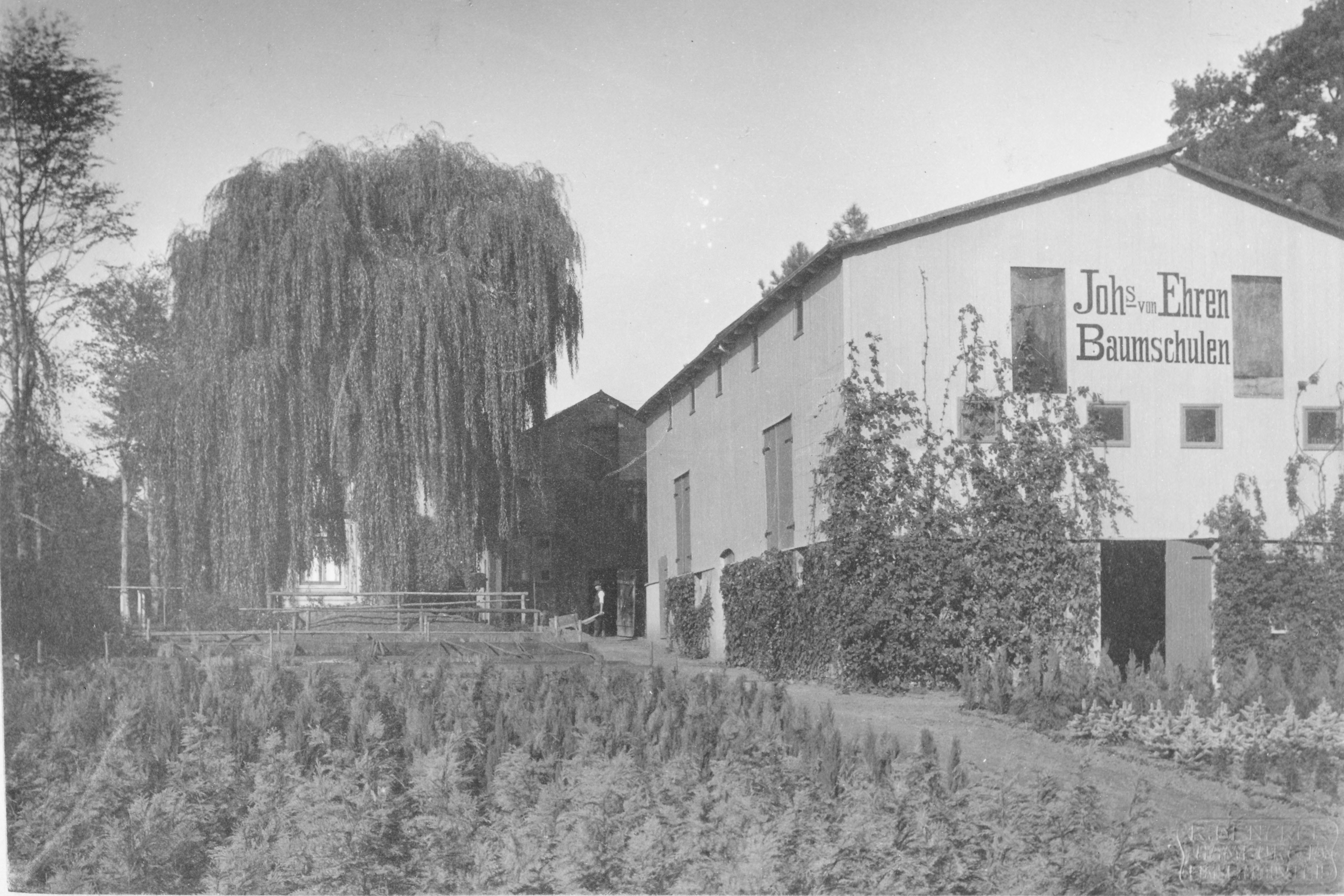
For more than 155 years, the name Lorenz von Ehren has stood for high-quality trees and shrubs, regardless of their size and age.
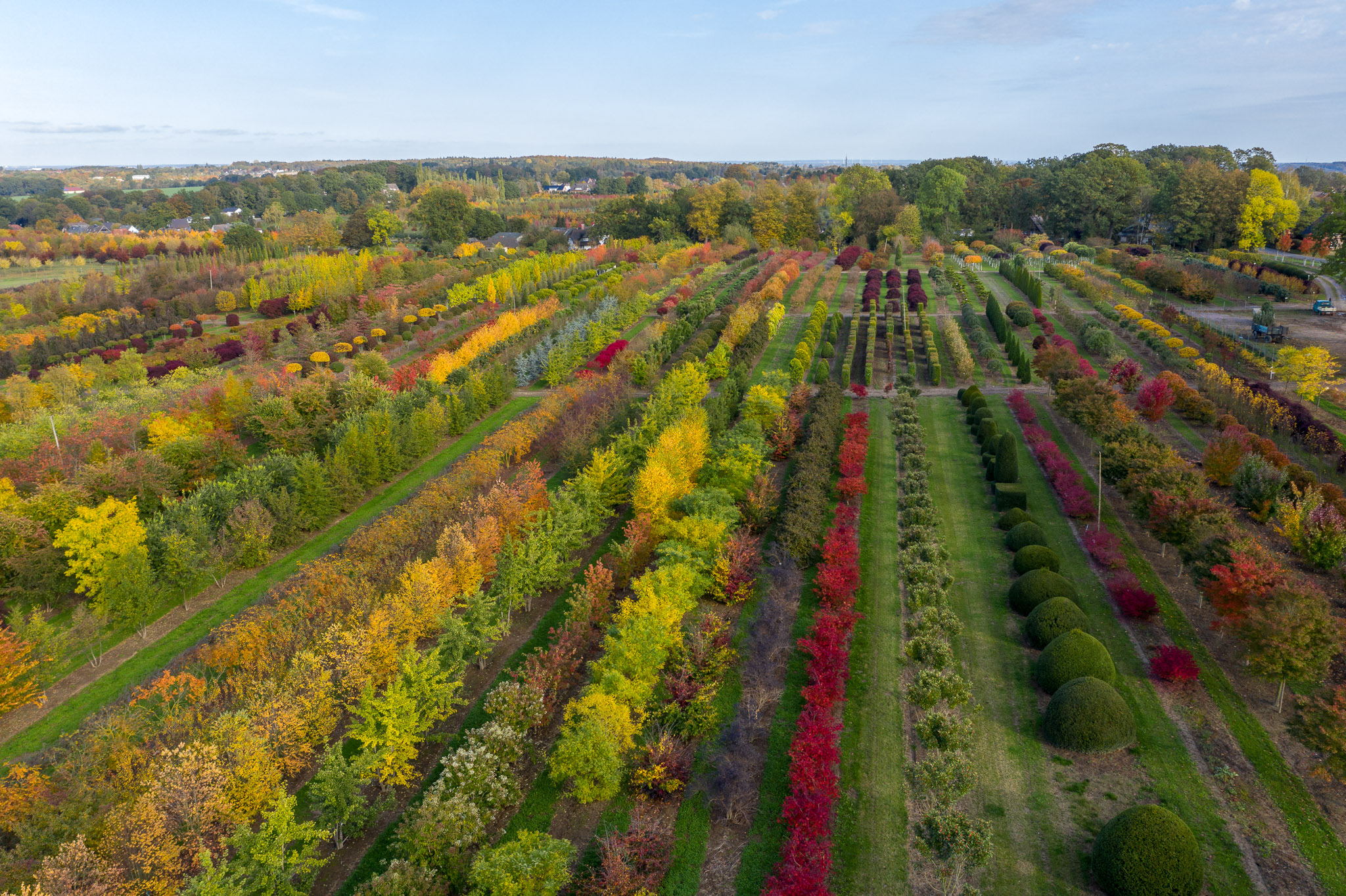
Large trees as well as avenue trees, bonsais and solitaires, topiaries, rhododendrons, hedging elements, fruit trees and conifers are grown on a total of 600 ha in Hamburg and Bad Zwischenahn.
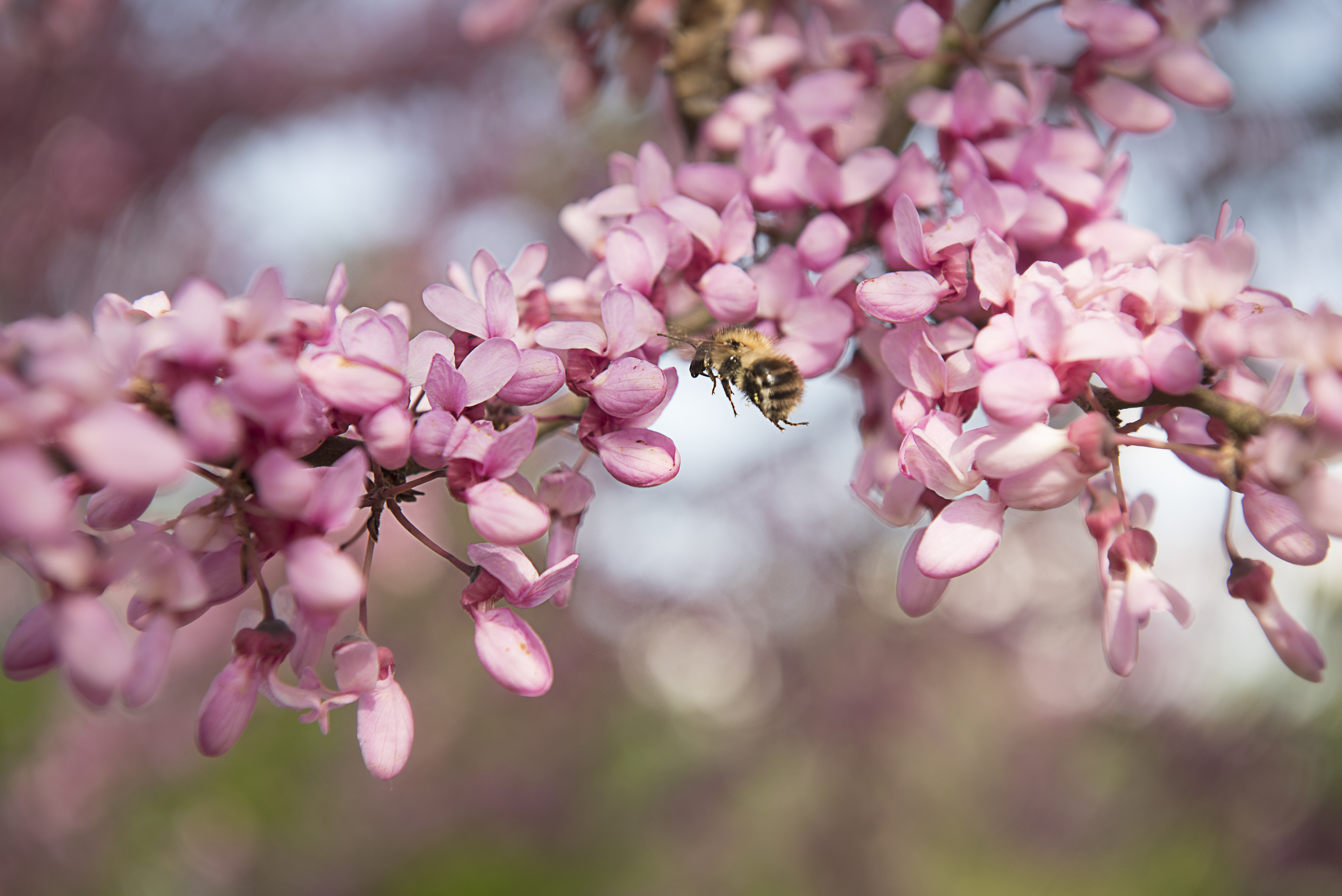
Strong and healthy plants only thrive on healthy soils. That is why we treat them with care. Sustainability is crucial to us, as we want all living around us to be in the very best condition.

